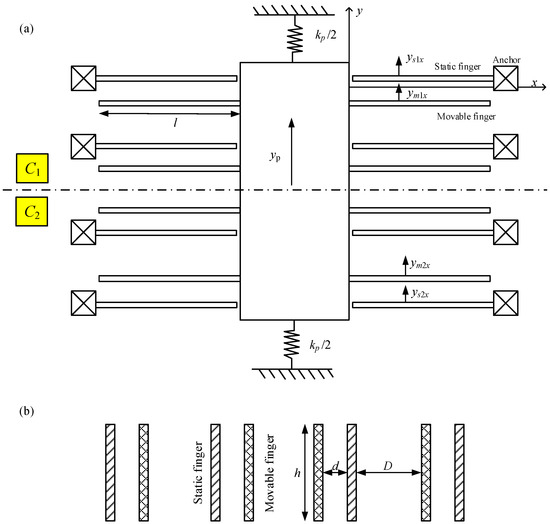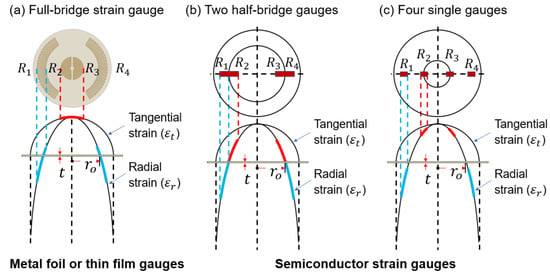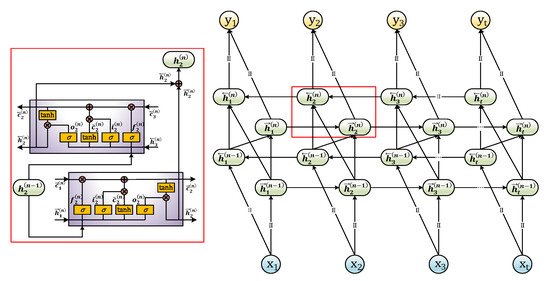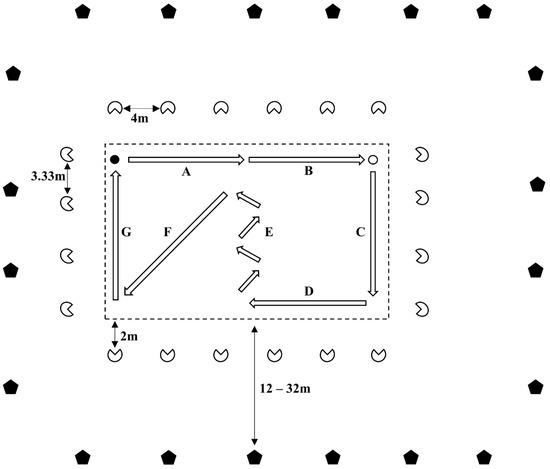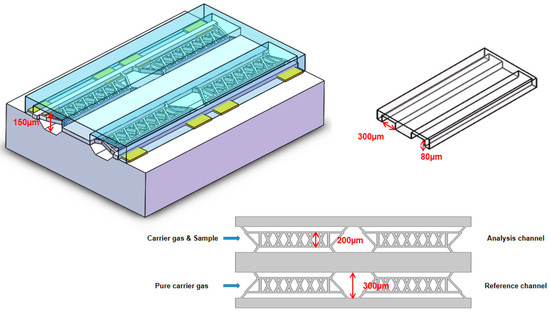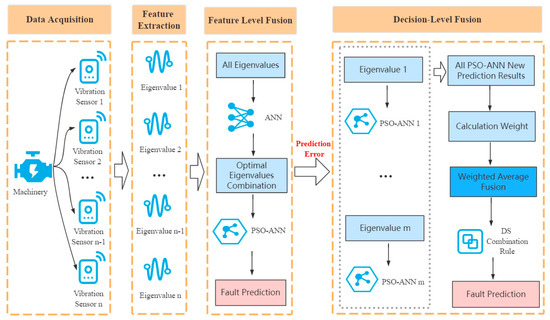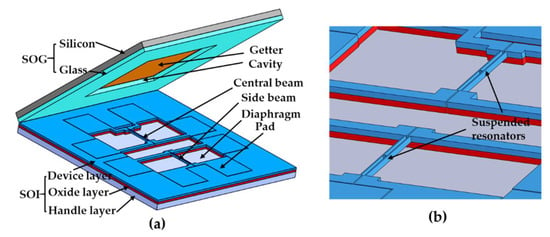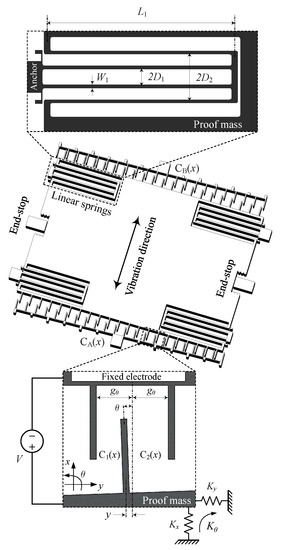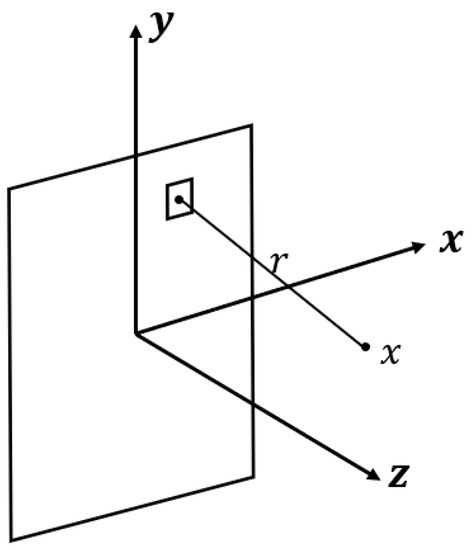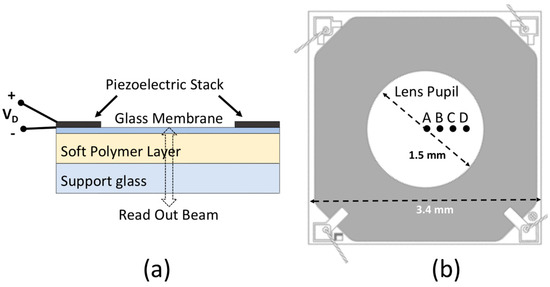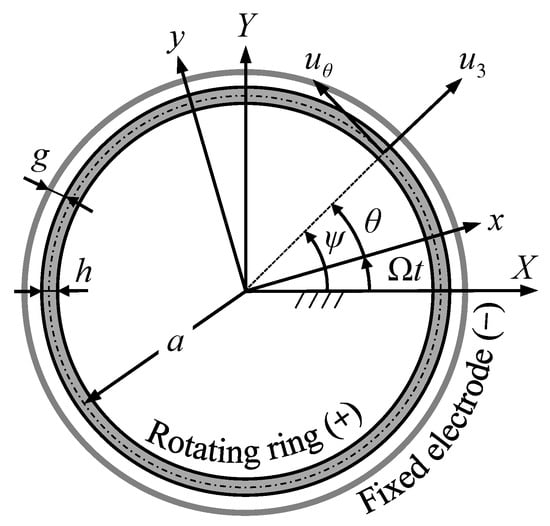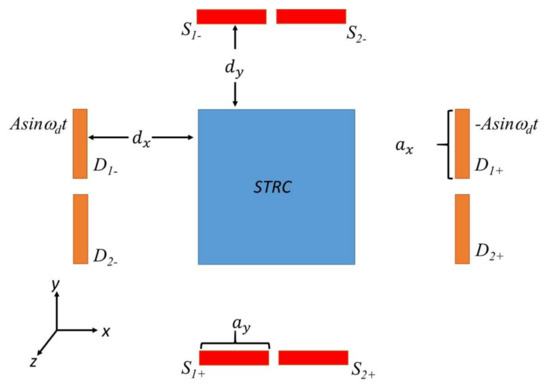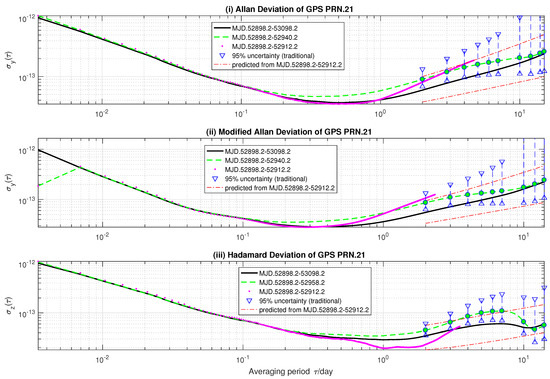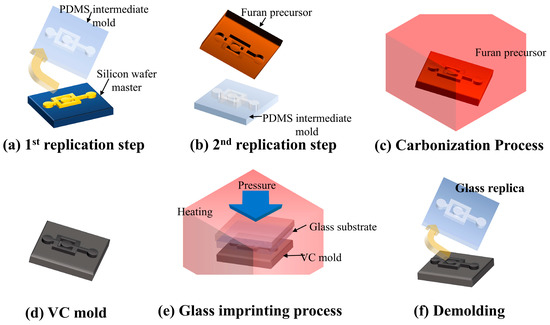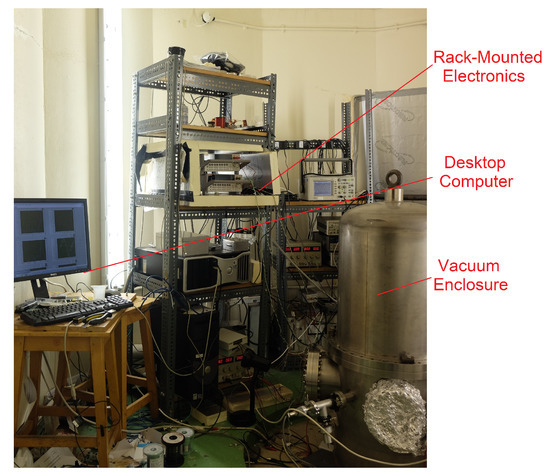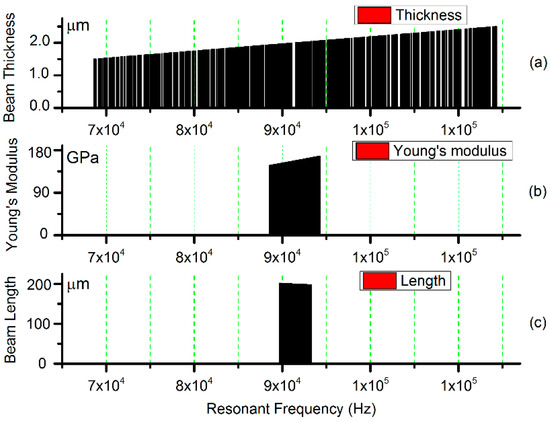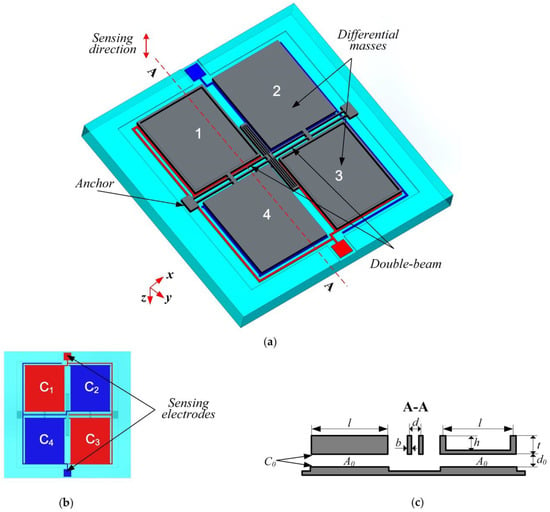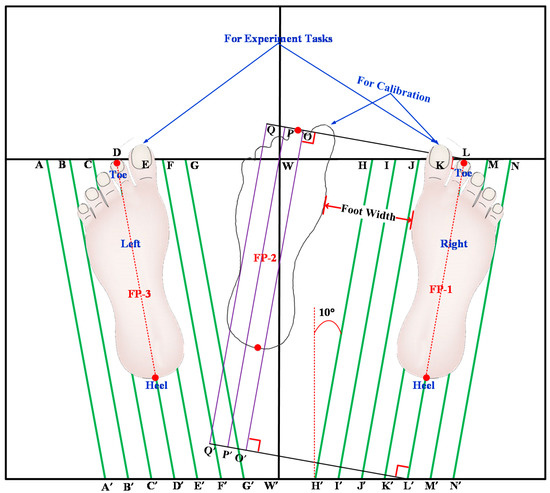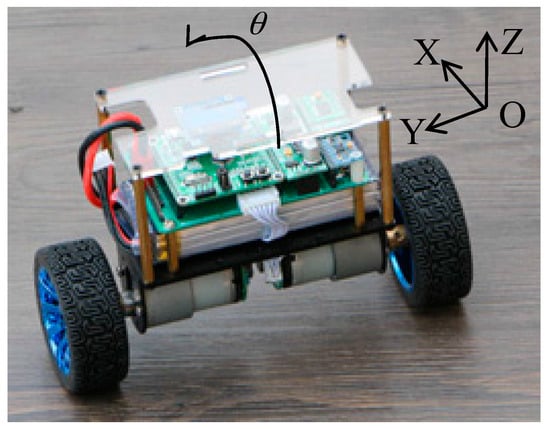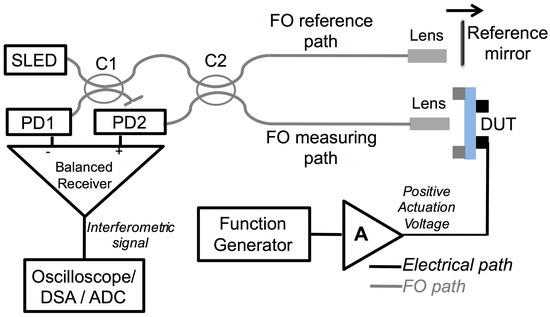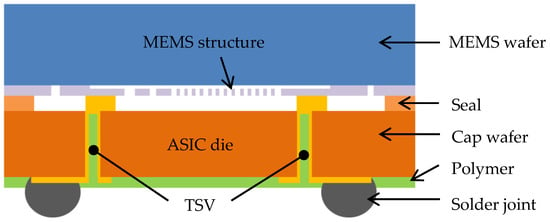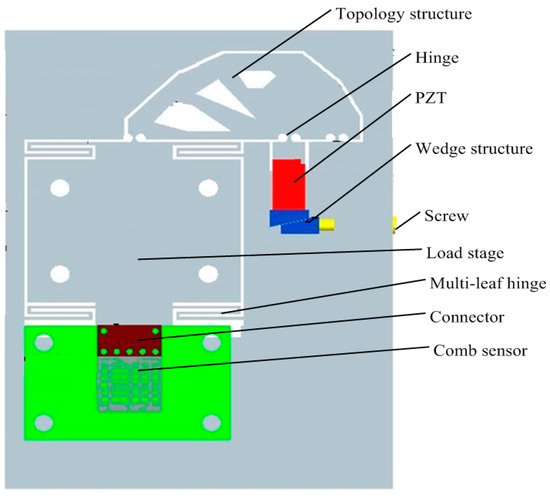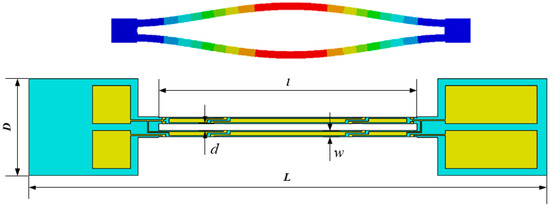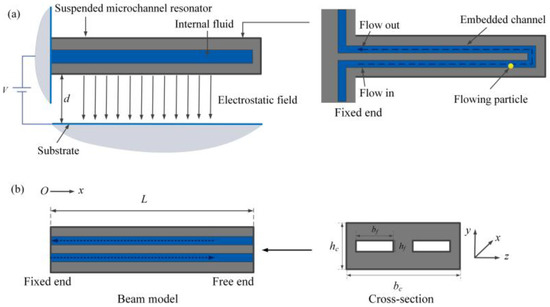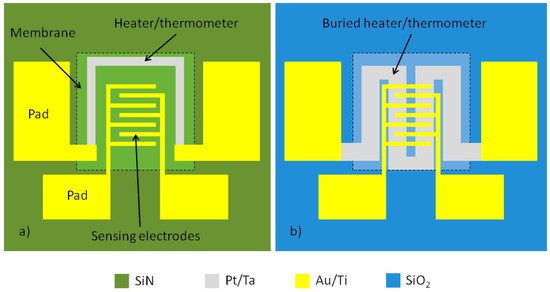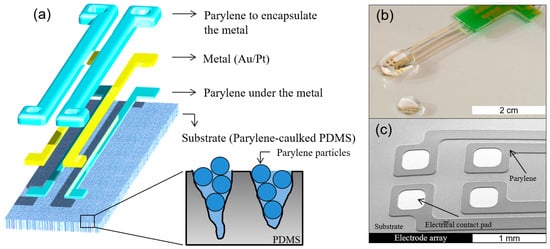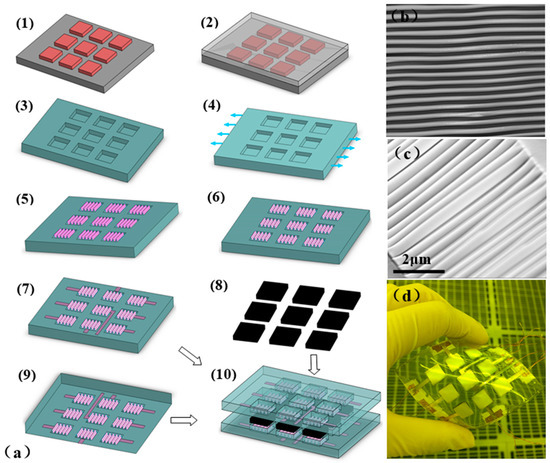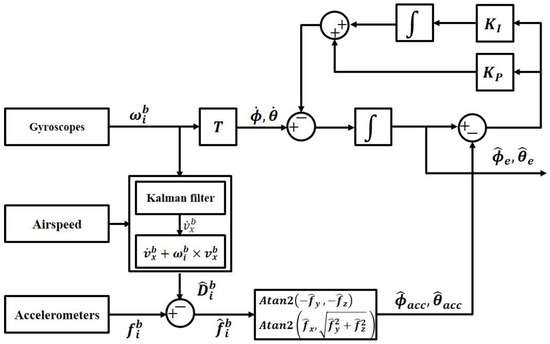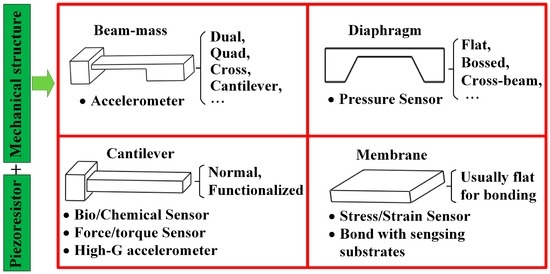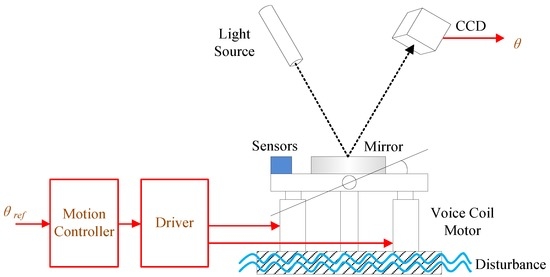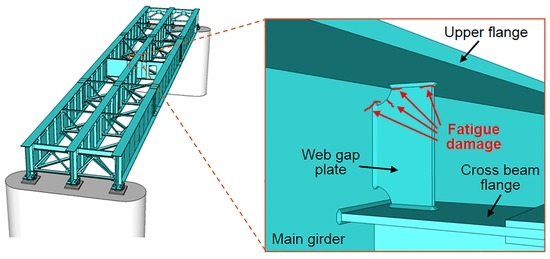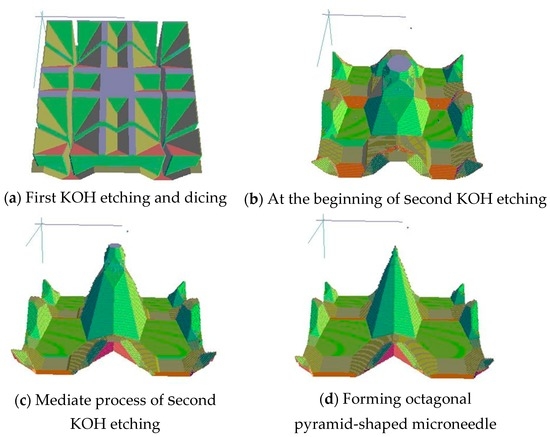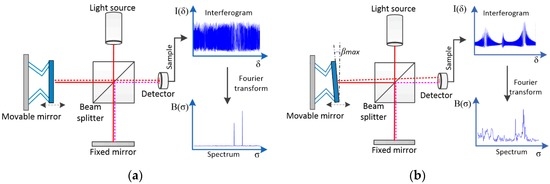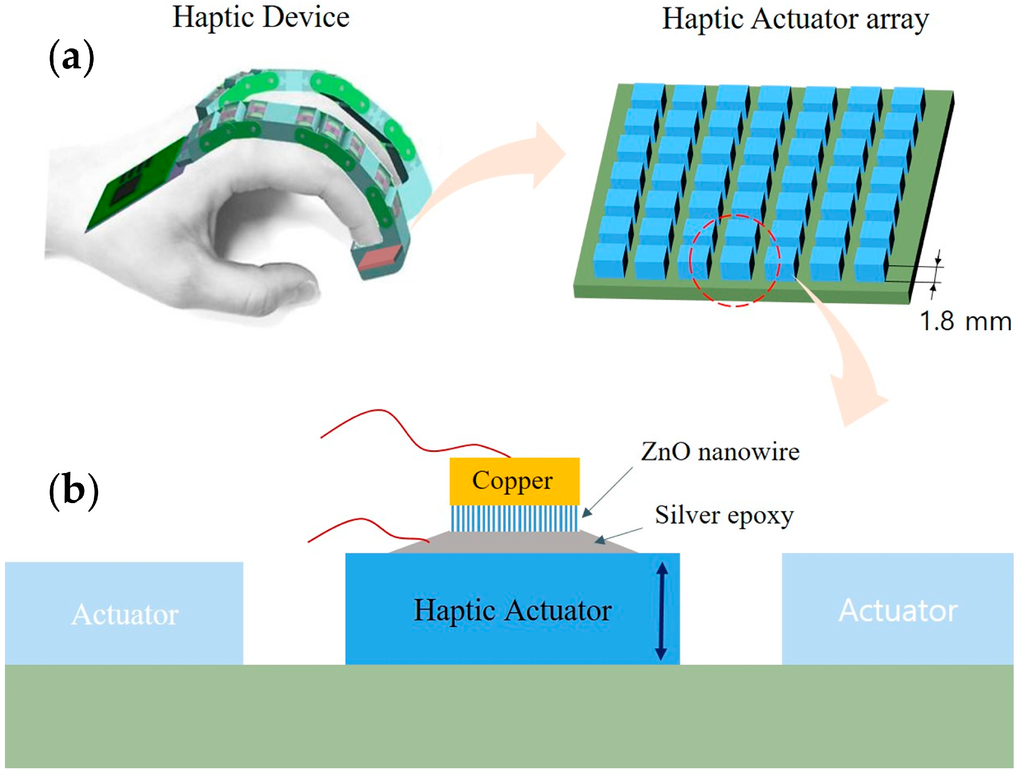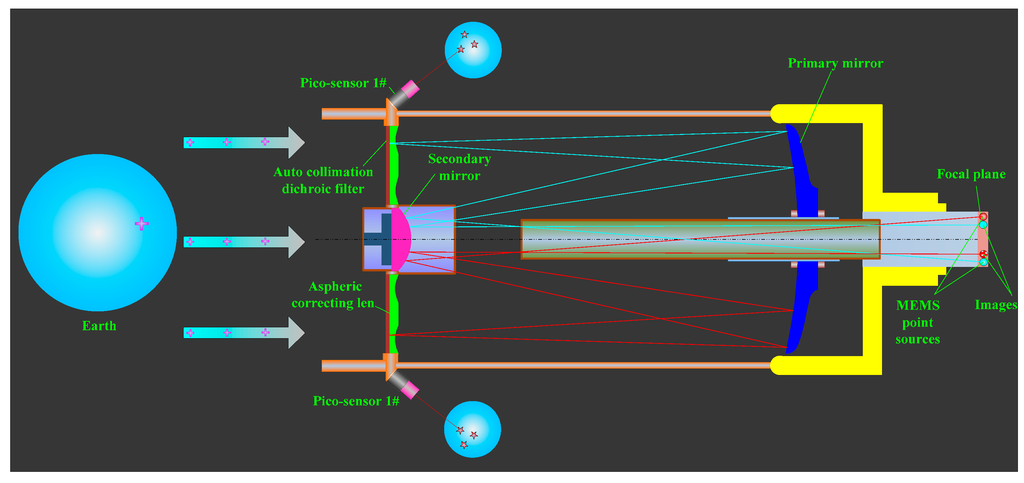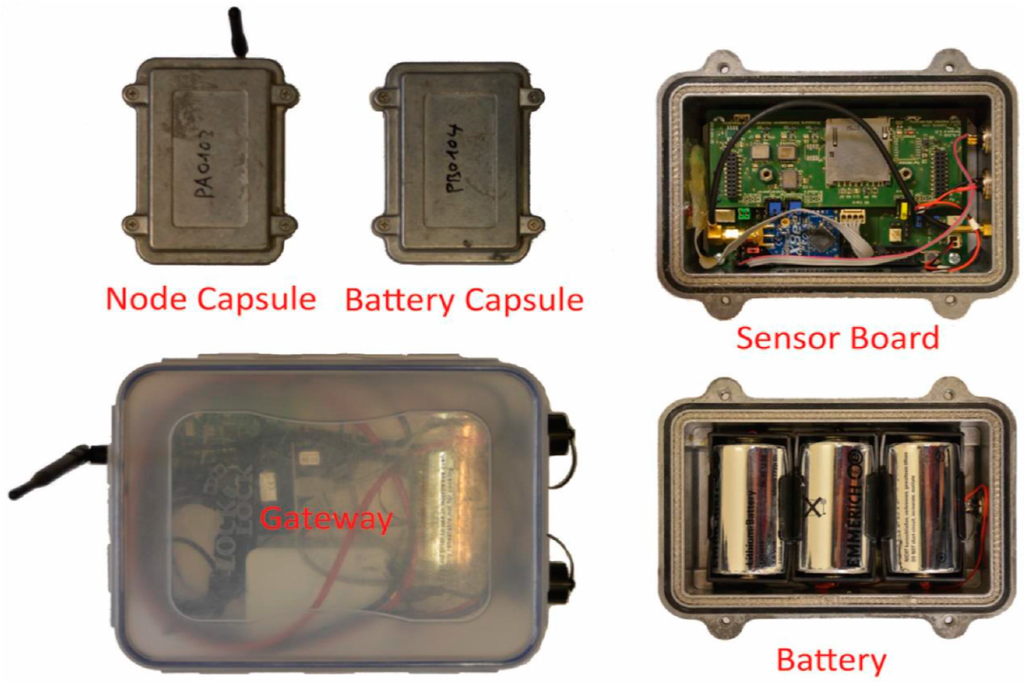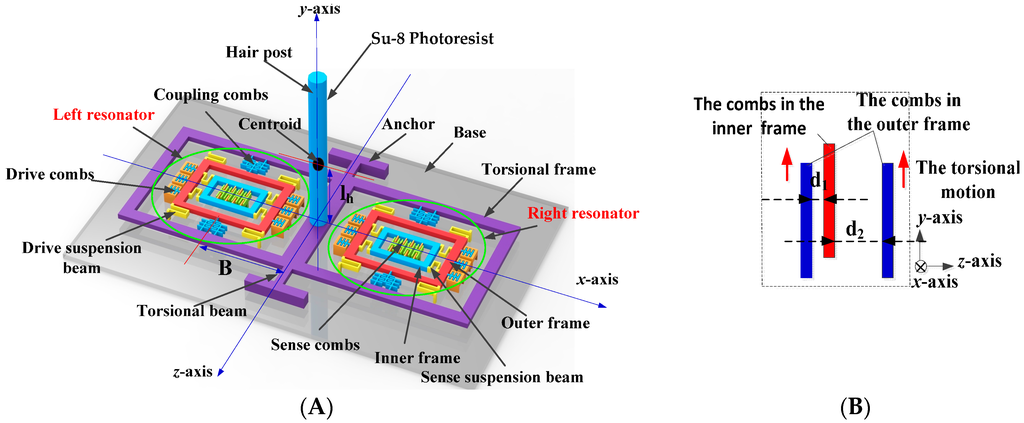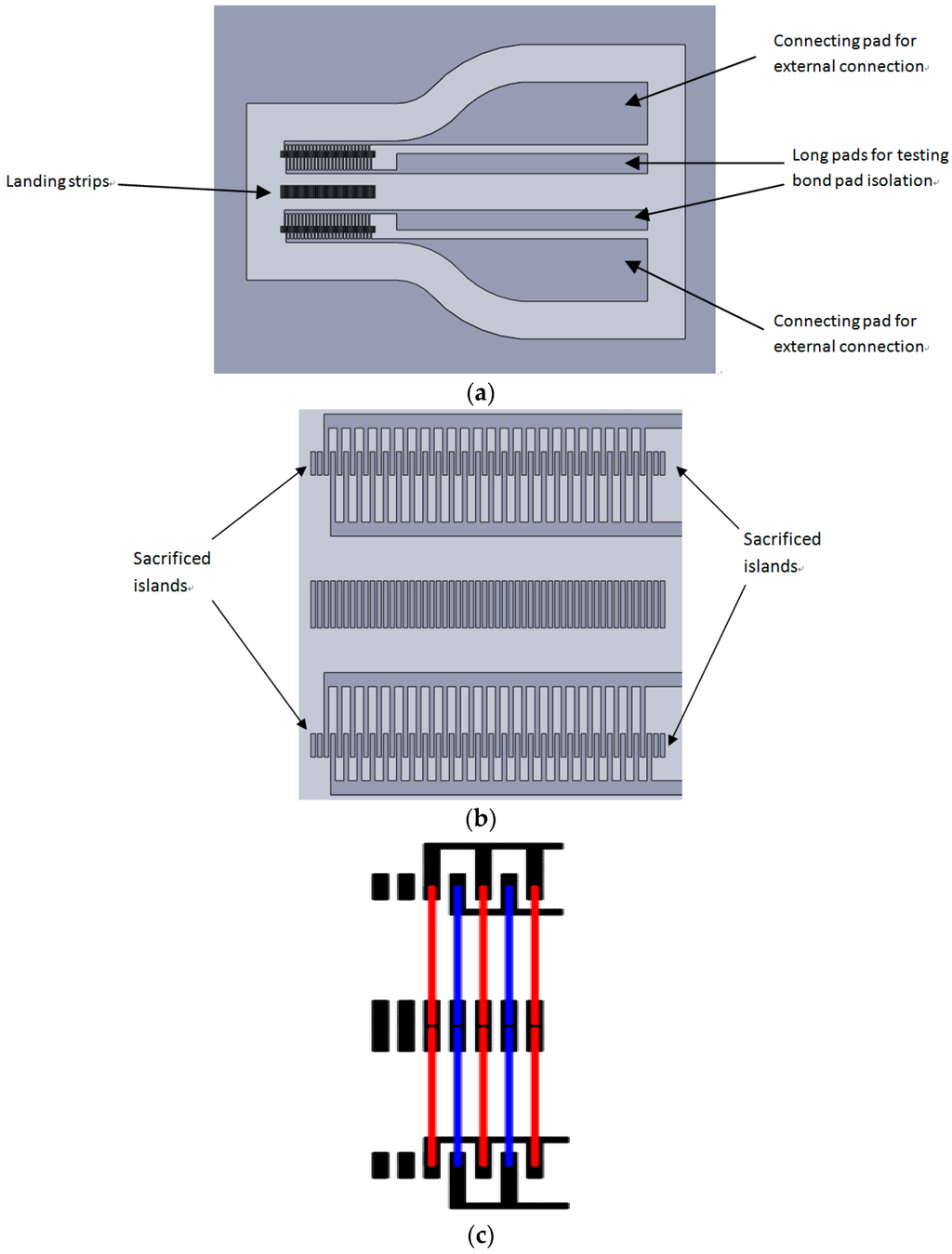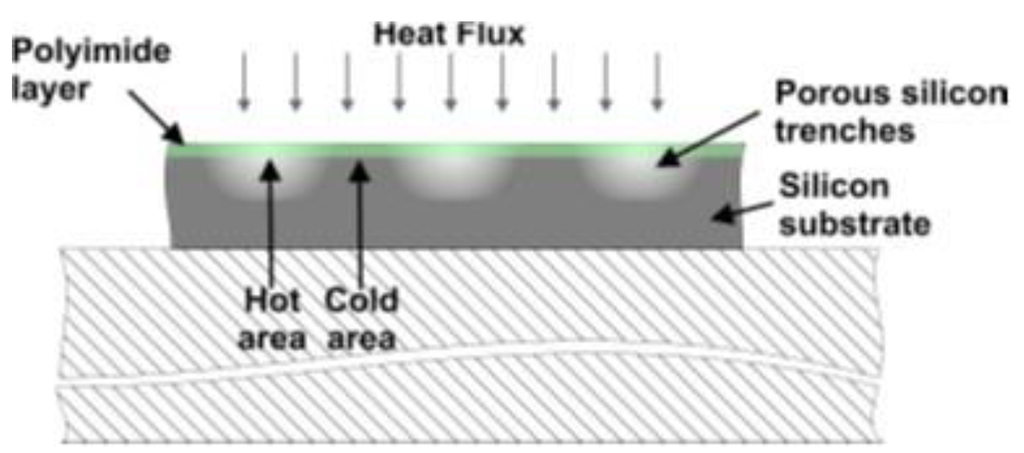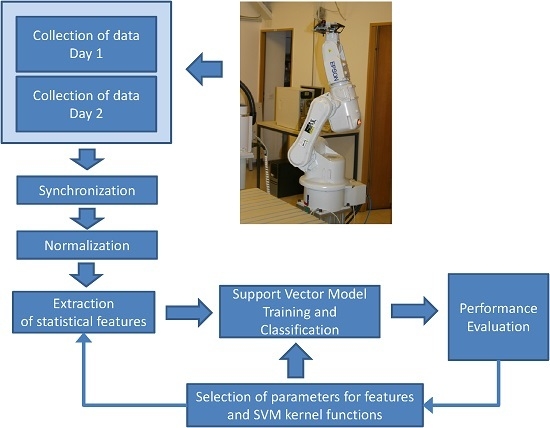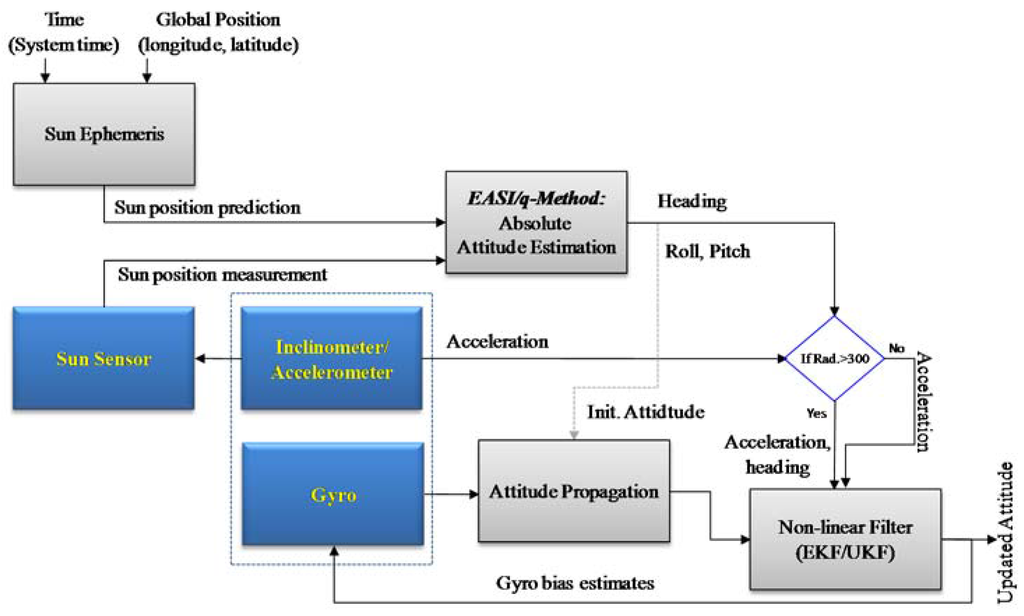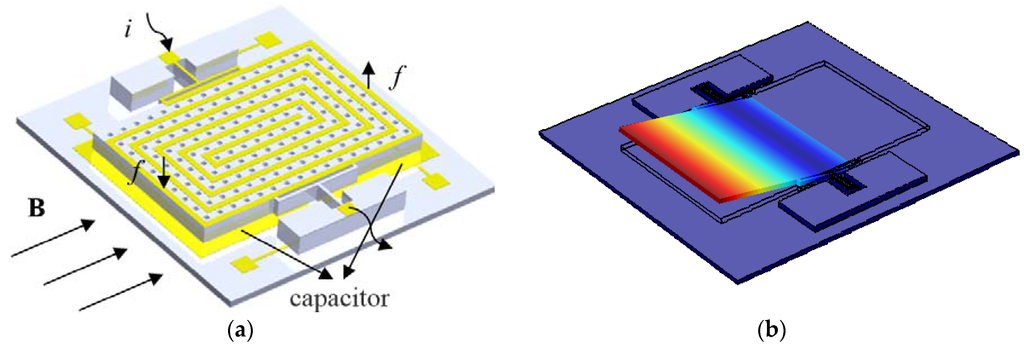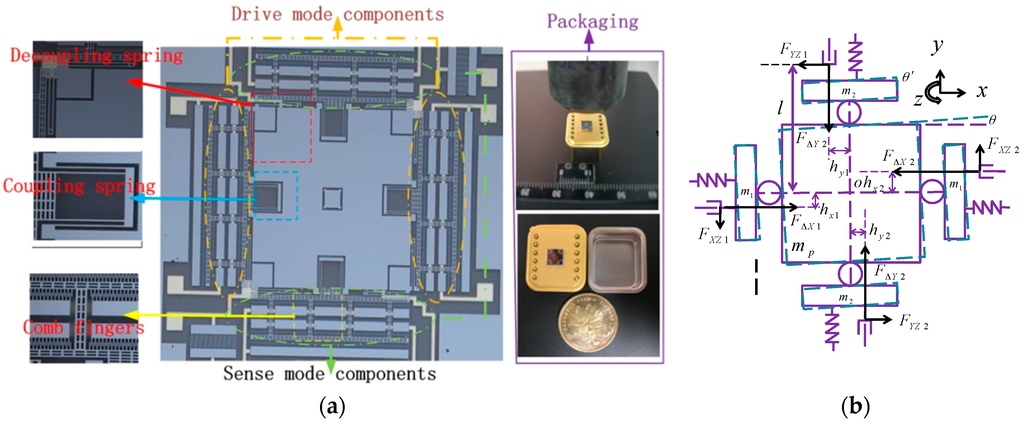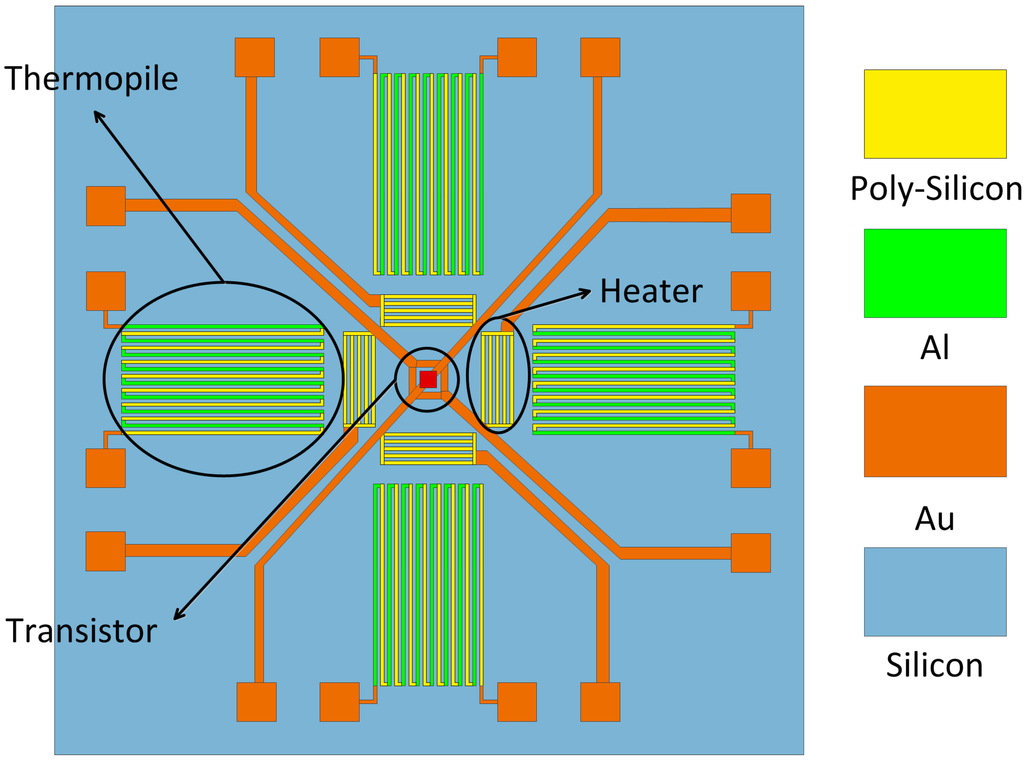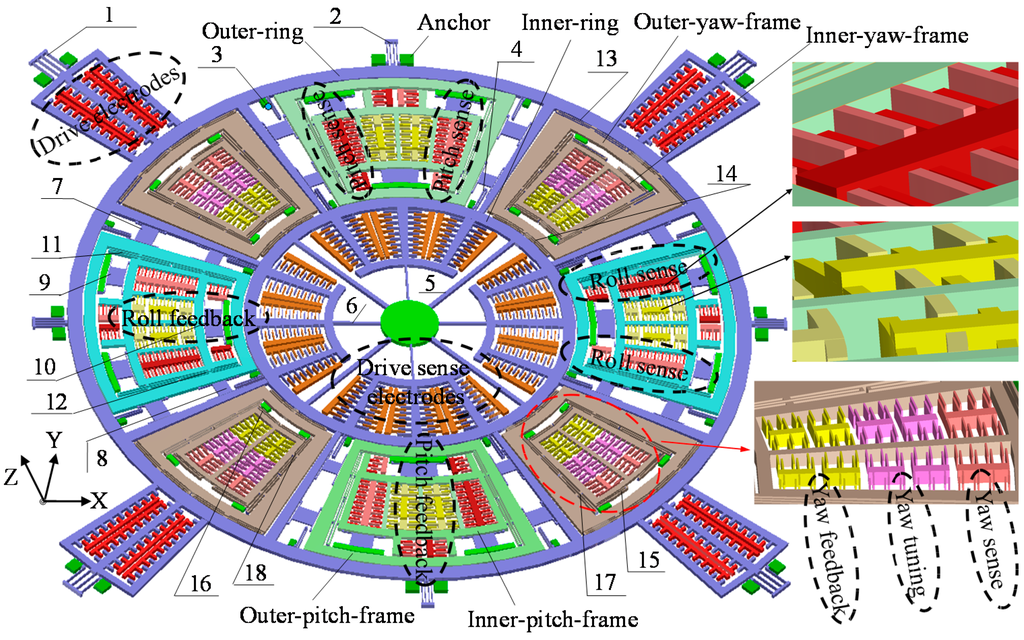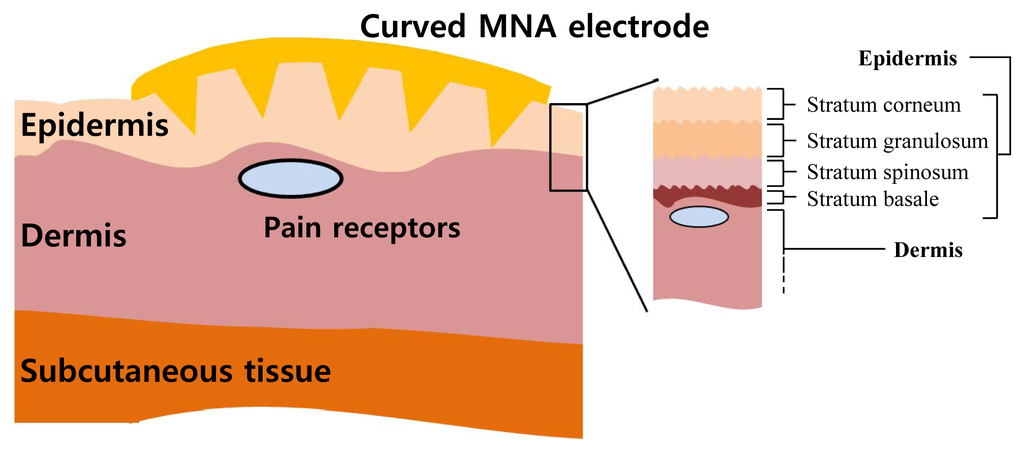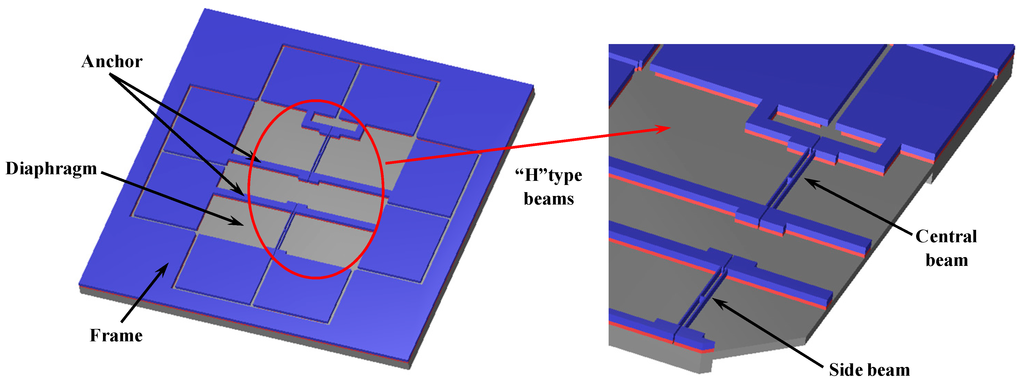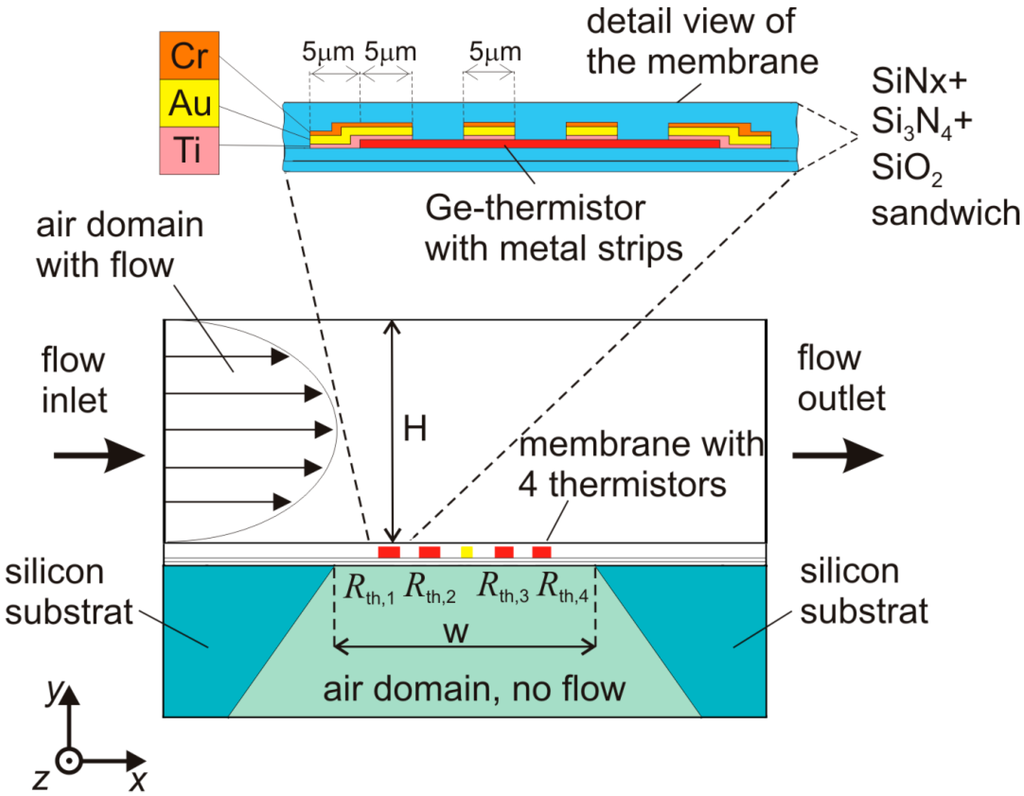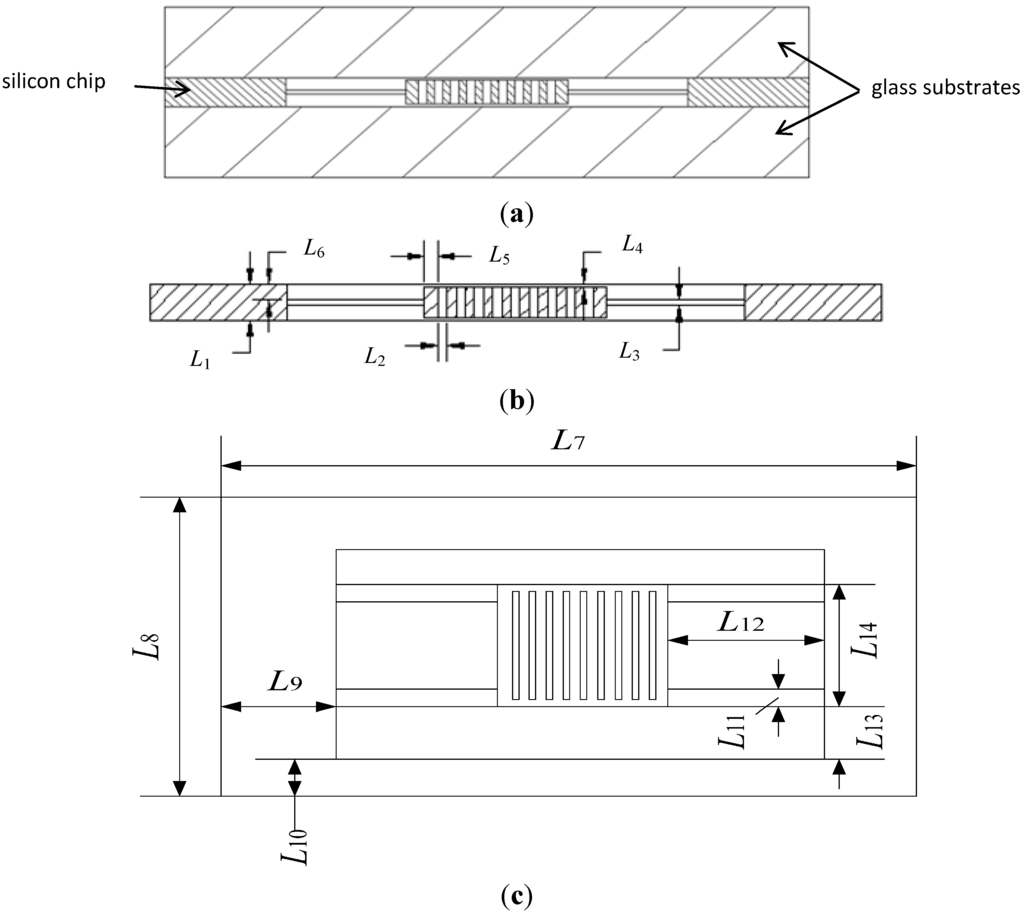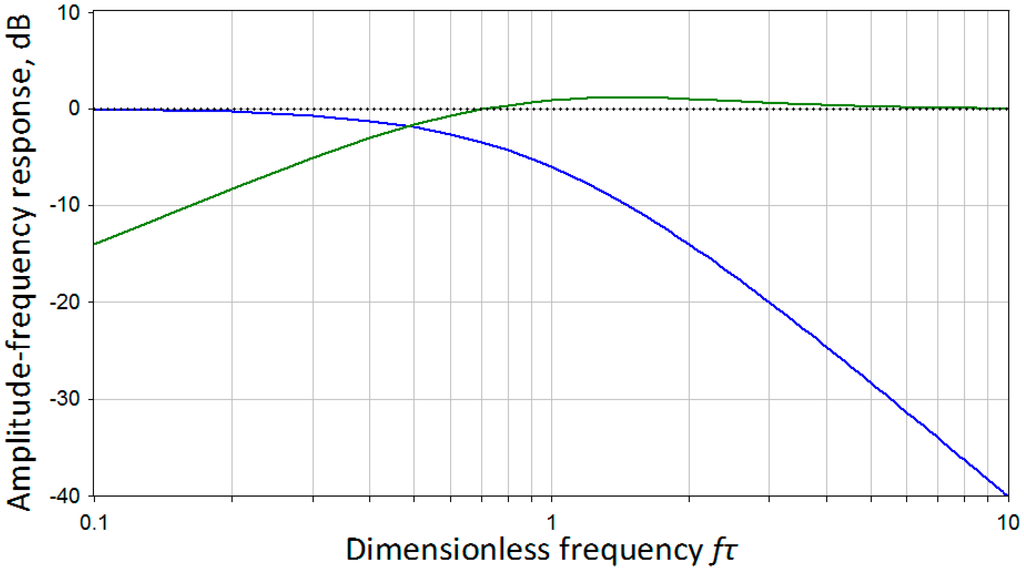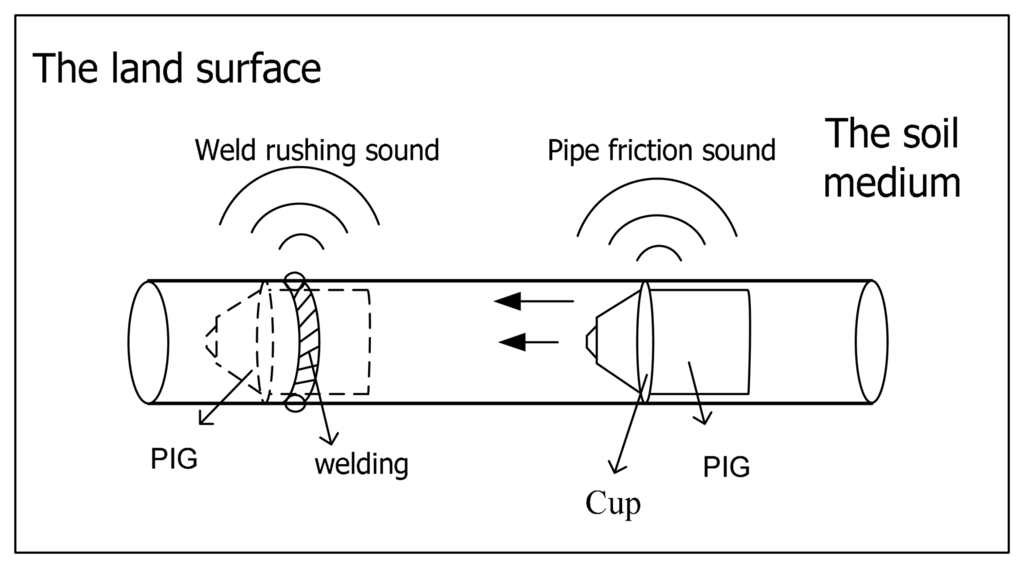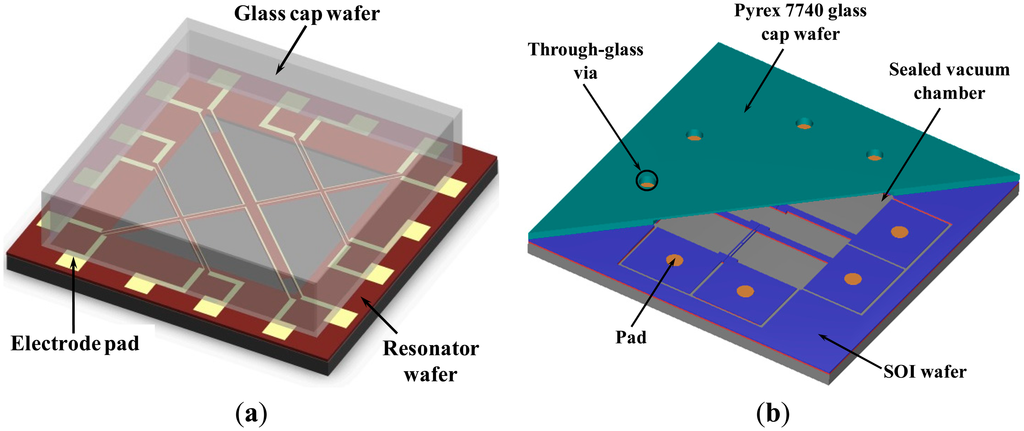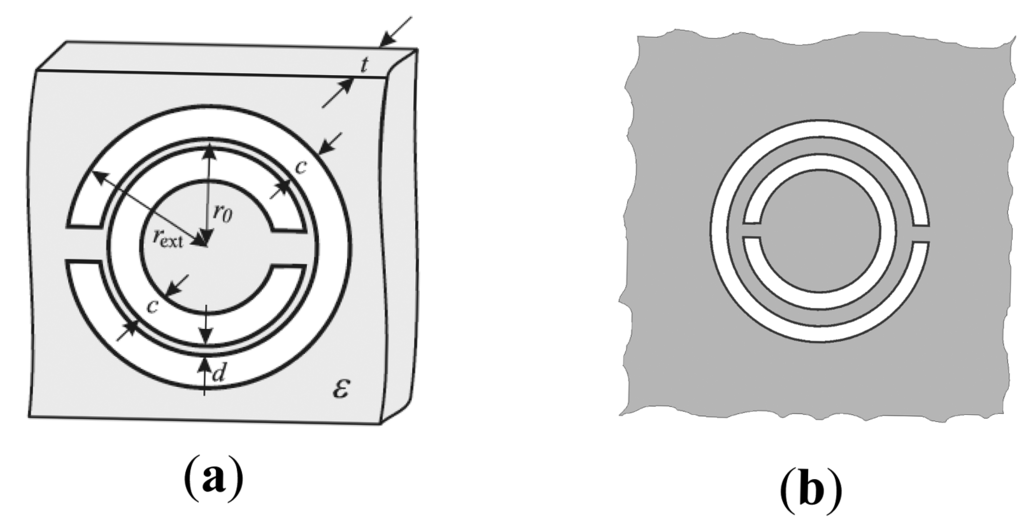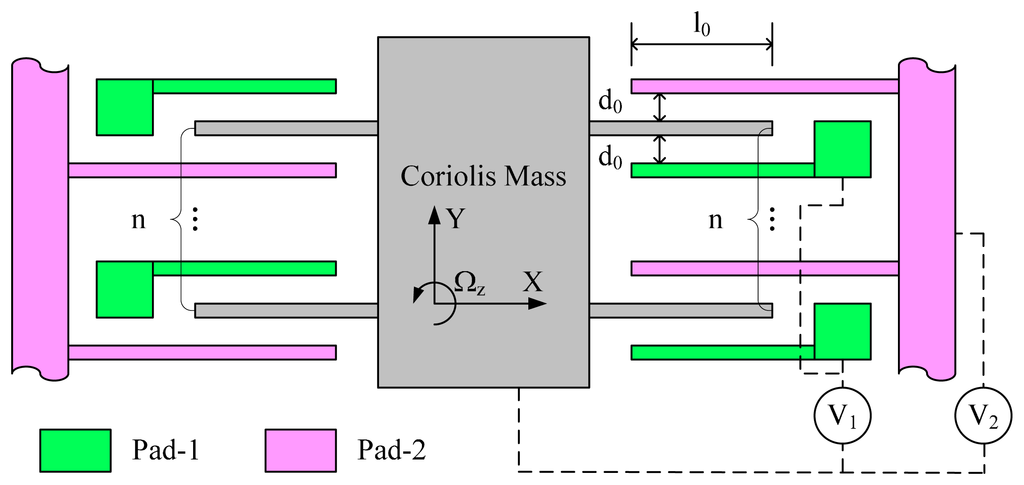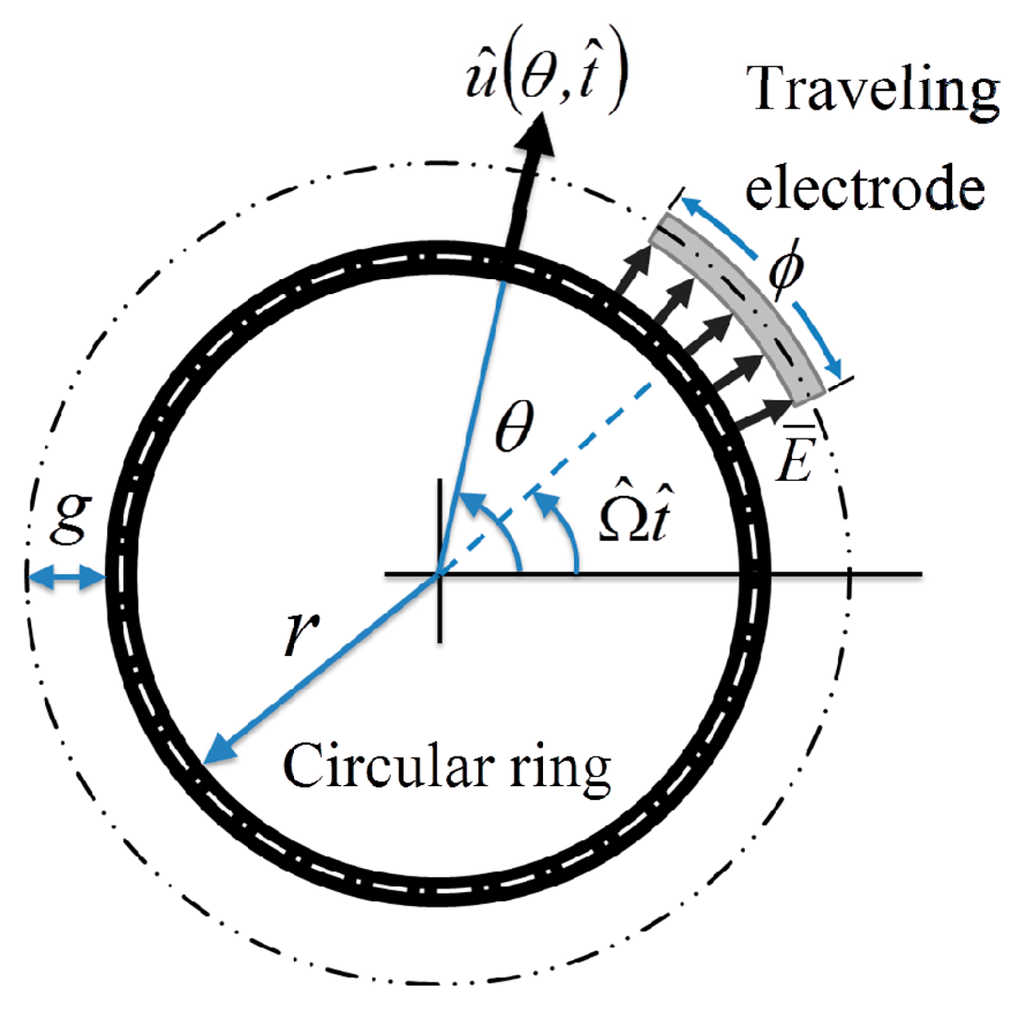Modeling, Testing and Reliability Issues in MEMS Engineering
A topical collection in Sensors (ISSN 1424-8220). This collection belongs to the section "Physical Sensors".
Viewed by 438394
Share This Topical Collection
Editor
Topical Collection Information
Dear Colleagues,
Micro-electro-mechanical-systems (MEMS) are devices on a millimeter scale, with micro-resolution. Each MEMS is given by the integration of mechanical elements, sensors, actuators and electronics on a common silicon substrate, obtained through micro-fabrication technology.
MEMS are often designed to work in mobile devices, and are therefore subject during their life to accidental mechanical loadings. Because of the MEMS size, multi-scale analyses are sometimes required in reliability analysis. Furthermore, also thermal, electrical, magnetic and environmental actions should be accounted for in a fully coupled multi-physics modelling of the devices.
As for packaging, some technical problems caused to the devices are not yet thoroughly understood and solved. Since standards do not necessarily apply to packaged MEMS, new knowledge-based testing methodologies need to be proposed.
The aim of this collection is to collect high quality research results on all these aspects of MEMS engineering.
Dr. Stefano Mariani
Collection Editor
Manuscript Submission Information
Manuscripts for the topical collection can be submitted online at www.mdpi.com by registering and logging in to this website. Once you are registered, click here to go to the submission form. All papers will be peer-reviewed. Accepted papers will be published continuously in the journal (as soon as accepted) and will be listed together on this website. The topical collection considers regular research articles, short communications and review articles. A guide for authors and other relevant information for submission of manuscripts is available on the Instructions for Authors page.
Please visit the Instructions for Authors page before submitting a manuscript. The article processing charge (APC) for publication in this open access journal is 2600 CHF (Swiss Francs).
Keywords
- micro-electro-mechanical-systems
- multi-scale and multi-physics modeling
- micro-fluidics
- failure analysis
- reliability analysis
- package engineering
Related Special Issues
Published Papers (65 papers)
Open AccessArticle
Multiple-Degree-of-Freedom Modeling and Simulation for Seismic-Grade Sigma–Delta MEMS Capacitive Accelerometers
by
Xuefeng Wang, Penghao Zhang and Shijin Ding
Cited by 2 | Viewed by 961
Abstract
The high-order mechanical resonances of the sensing element in a high-vacuum environment can significantly degrade the noise and distortion performance of seismic-grade sigma–delta MEMS capacitive accelerometers. However, the current modeling approach is unable to evaluate the effects of high-order mechanical resonances. This study
[...] Read more.
The high-order mechanical resonances of the sensing element in a high-vacuum environment can significantly degrade the noise and distortion performance of seismic-grade sigma–delta MEMS capacitive accelerometers. However, the current modeling approach is unable to evaluate the effects of high-order mechanical resonances. This study proposes a novel multiple-degree-of-freedom (MDOF) model to evaluate the noise and distortion induced by high-order mechanical resonances. Firstly, the MDOF dynamic equations of the sensing element are derived using the principle of modal superposition and Lagrange’s equations. Secondly, a fifth-order electromechanical sigma–delta system of the MEMS accelerometer is established in Simulink based on the dynamic equations of the sensing element. Then, the mechanism through which the high-order mechanical resonances degrade the noise and distortion performances is discovered by analyzing the simulated result. Finally, a noise and distortion suppression method is proposed based on the appropriate improvement in high-order natural frequency. The results show that the low-frequency noise drastically decreases from about −120.5 dB to −175.3 dB after the high-order natural frequency increases from about 130 kHz to 455 kHz. The harmonic distortion also reduces significantly.
Full article
►▼
Show Figures
Open AccessArticle
Reciprocating Arc Silicon Strain Gauges
by
Ji-Hoon Han, Sung Joon Min, Joon Hyub Kim and Nam Ki Min
Cited by 2 | Viewed by 2016
Abstract
Currently, silicon-strain-gauge-based diaphragm pressure sensors use four single-gauge chips for high-output sensitivity. However, the four-single-gauge configuration increases the number of glass frit bonds and the number of aluminum wire bonds, reducing the long-term stability, reliability, and yield of the diaphragm pressure sensor. In
[...] Read more.
Currently, silicon-strain-gauge-based diaphragm pressure sensors use four single-gauge chips for high-output sensitivity. However, the four-single-gauge configuration increases the number of glass frit bonds and the number of aluminum wire bonds, reducing the long-term stability, reliability, and yield of the diaphragm pressure sensor. In this study, a new design of general-purpose silicon strain gauges was developed to improve the sensor output voltage while reducing the number of bonds. The new gauges consist grid patterns with a reciprocating arc of silicon piezoresistors on a thin glass backing. The gauges make handling easier in the bonding process due to the use of thin glass for the gauge backing. The pressure sensors were tested under pressure ranging from 0 to 50 bar at five different temperatures, with a linear output with a typical sensitivity of approximately 16 mV/V/bar and an offset shift of –6 mV to 2 mV. The new approach also opens the possibility to extend arc strain gauges to half-bridge and full-bridge configurations to further reduce the number of glass frit and Al wire bonds in the diaphragm pressure sensor.
Full article
►▼
Show Figures
Open AccessArticle
Design and Optimization of a Pressure Sensor Based on Serpentine-Shaped Graphene Piezoresistors for Measuring Low Pressure
by
Xincheng Ren, Xianyun Liu, Xin Su and Xingfang Jiang
Cited by 7 | Viewed by 2962
Abstract
This thesis describes a novel microelectromechanical system (MEMS) piezoresistive pressure sensor based on serpentine-shaped graphene piezoresistors paired with trapezoidal prisms under the diaphragm for measuring low pressure. The finite element method (FEM) is utilized to analyze the mechanical stress and membrane deflection to
[...] Read more.
This thesis describes a novel microelectromechanical system (MEMS) piezoresistive pressure sensor based on serpentine-shaped graphene piezoresistors paired with trapezoidal prisms under the diaphragm for measuring low pressure. The finite element method (FEM) is utilized to analyze the mechanical stress and membrane deflection to enhance the degree of stress concentration in this unique sensor. The functional relationship between mechanical performance and dimension variables is established after using the curve fitting approach to handle the stress and deflection. Additionally, the Taguchi optimization method is employed to identify the best dimensions for the proposed structure. Then, the suggested design is compared to the other three designs in terms of operating performance. It is revealed that the recommended sensor can significantly improve sensitivity while maintaining extremely low nonlinearity. In this study, three different types of serpentine-shaped graphene piezoresistors are also designed, and their sensing capability is compared to silicon. The simulation results indicate that the pressure sensor with Type 2 graphene piezoresistors has a maximum sensitivity of 24.50 mV/psi and ultra-low nonlinearity of 0.06% FSS in the pressure range of 0–3 psi.
Full article
►▼
Show Figures
Open AccessArticle
A Combined Method for MEMS Gyroscope Error Compensation Using a Long Short-Term Memory Network and Kalman Filter in Random Vibration Environments
by
Chenhao Zhu, Sheng Cai, Yifan Yang, Wei Xu, Honghai Shen and Hairong Chu
Cited by 8 | Viewed by 2734
Abstract
In applications such as carrier attitude control and mobile device navigation, a micro-electro-mechanical-system (MEMS) gyroscope will inevitably be affected by random vibration, which significantly affects the performance of the MEMS gyroscope. In order to solve the degradation of MEMS gyroscope performance in random
[...] Read more.
In applications such as carrier attitude control and mobile device navigation, a micro-electro-mechanical-system (MEMS) gyroscope will inevitably be affected by random vibration, which significantly affects the performance of the MEMS gyroscope. In order to solve the degradation of MEMS gyroscope performance in random vibration environments, in this paper, a combined method of a long short-term memory (LSTM) network and Kalman filter (KF) is proposed for error compensation, where Kalman filter parameters are iteratively optimized using the Kalman smoother and expectation-maximization (EM) algorithm. In order to verify the effectiveness of the proposed method, we performed a linear random vibration test to acquire MEMS gyroscope data. Subsequently, an analysis of the effects of input data step size and network topology on gyroscope error compensation performance is presented. Furthermore, the autoregressive moving average-Kalman filter (ARMA-KF) model, which is commonly used in gyroscope error compensation, was also combined with the LSTM network as a comparison method. The results show that, for the
x-axis data, the proposed combined method reduces the standard deviation (STD) by 51.58% and 31.92% compared to the bidirectional LSTM (BiLSTM) network, and EM-KF method, respectively. For the
z-axis data, the proposed combined method reduces the standard deviation by 29.19% and 12.75% compared to the BiLSTM network and EM-KF method, respectively. Furthermore, for
x-axis data and
z-axis data, the proposed combined method reduces the standard deviation by 46.54% and 22.30% compared to the BiLSTM-ARMA-KF method, respectively, and the output is smoother, proving the effectiveness of the proposed method.
Full article
►▼
Show Figures
Open AccessLetter
Criterion Validity of Catapult ClearSky T6 Local Positioning System for Measuring Inter-Unit Distance
by
Ryan W. Hodder, Kevin A. Ball and Fabio R. Serpiello
Cited by 18 | Viewed by 4327
Abstract
The validity of a local positioning system (LPS) to measure inter-unit distance was investigated during a team sport movement circuit. Eight recreationally active, female indoor team-sport players completed a circuit, comprising seven types of movements (walk, jog, jump, sprint, 45° change of direction
[...] Read more.
The validity of a local positioning system (LPS) to measure inter-unit distance was investigated during a team sport movement circuit. Eight recreationally active, female indoor team-sport players completed a circuit, comprising seven types of movements (walk, jog, jump, sprint, 45° change of direction and shuffle), on an indoor court. Participants wore a receiver tag (ClearSky T6, Catapult Sports) and seven reflective markers, to allow for a comparison with the reference system (©Vicon Motion Systems, Oxford Metrics, UK). Inter-unit distance was collected for each combination of participants. Validity was assessed via root mean square error, mean bias and percentage of variance accounted for, both as an overall dataset and split into distance bands. The results presented a mean root mean square error of 0.20 ± 0.05 m, and mean bias detected an overestimation for all distance bands. The LPS shows acceptable accuracy for measuring inter-unit distance, opening up opportunities to utilise player tracking for tactical variables indoors.
Full article
►▼
Show Figures
Open AccessArticle
Fabrication of Thermal Conductivity Detector Based on MEMS for Monitoring Dissolved Gases in Power Transformer
by
Tingliang Tan, Jianhai Sun, Tingting Chen, Xinxiao Zhang and Xiaofeng Zhu
Cited by 3 | Viewed by 5549
Abstract
In this work, a high sensitivity micro-thermal conductivity detector (μTCD) with four thermal conductivity cells was proposed. Compared with conventional TCD sensors, the thermal conductivity cell in this work was designed as a streamlined structure; the thermistors were supported by a strong cantilever
[...] Read more.
In this work, a high sensitivity micro-thermal conductivity detector (μTCD) with four thermal conductivity cells was proposed. Compared with conventional TCD sensors, the thermal conductivity cell in this work was designed as a streamlined structure; the thermistors were supported by a strong cantilever beam and suspended in the center of the thermal conductivity cell, which was able to greatly reduce the dead volume of the thermal conductivity cell and the heat loss of the substrate, improving the detection sensitivity. The experimental results demonstrated that the μTCD shows good stability and high sensitivity, which could rapidly detect light gases with a detection limit of 10 ppm and a quantitative repeatability of less than 1.1%.
Full article
►▼
Show Figures
Open AccessArticle
Research on Mechanical Fault Prediction Method Based on Multifeature Fusion of Vibration Sensing Data
by
Min Huang and Zhen Liu
Cited by 22 | Viewed by 3410
Abstract
Vibration sensing data is an important resource for mechanical fault prediction, which is widely used in the industrial sector. Artificial neural networks (ANNs) are important tools for classifying vibration sensing data. However, their basic structures and hyperparameters must be manually adjusted, which results
[...] Read more.
Vibration sensing data is an important resource for mechanical fault prediction, which is widely used in the industrial sector. Artificial neural networks (ANNs) are important tools for classifying vibration sensing data. However, their basic structures and hyperparameters must be manually adjusted, which results in the prediction accuracy easily falling into the local optimum. For data with high levels of uncertainty, it is difficult for an ANN to obtain correct prediction results. Therefore, we propose a multifeature fusion model based on Dempster-Shafer evidence theory combined with a particle swarm optimization algorithm and artificial neural network (PSO-ANN). The model first used the particle swarm optimization algorithm to optimize the structure and hyperparameters of the ANN, thereby improving its prediction accuracy. Then, the prediction error data of the multifeature fusion using a PSO-ANN is repredicted using multiple PSO-ANNs with different single feature training to obtain new prediction results. Finally, the Dempster-Shafer evidence theory was applied to the decision-level fusion of the new prediction results preprocessed with prediction accuracy and belief entropy, thus improving the model’s ability to process uncertain data. The experimental results indicated that compared to the K-nearest neighbor method, support vector machine, and long short-term memory neural networks, the proposed model can effectively improve the accuracy of fault prediction.
Full article
►▼
Show Figures
Open AccessArticle
A Temperature-Insensitive Resonant Pressure Micro Sensor Based on Silicon-on-Glass Vacuum Packaging
by
Pengcheng Yan, Yulan Lu, Chao Xiang, Junbo Wang, Deyong Chen and Jian Chen
Cited by 13 | Viewed by 3705
Abstract
This paper presents a temperature-insensitive resonant pressure sensor, which is mainly composed of a silicon-on-insulator (SOI) wafer for pressure measurements and a silicon-on-glass (SOG) cap for vacuum packaging. The variations of pressure under measurement bend the pressure sensitive diaphragm and regulate the intrinsic
[...] Read more.
This paper presents a temperature-insensitive resonant pressure sensor, which is mainly composed of a silicon-on-insulator (SOI) wafer for pressure measurements and a silicon-on-glass (SOG) cap for vacuum packaging. The variations of pressure under measurement bend the pressure sensitive diaphragm and regulate the intrinsic frequencies of the resonators in the device layer. While, variations of temperature cannot significantly change the intrinsic frequencies of the resonators, due to the SOG cap to offset generated thermal stress. Numerical simulations, based on finite element analysis, were conducted to calculate the residual thermal stress and optimize the sensing structures. Experimental results show that the Q-factors of the resonators are higher than 16,000, with a differential pressure sensitivity of 11.89 Hz/kPa, a nonlinearity of 0.01% F.S and a low fitting error of 0.01% F.S with the pressure varying from 100 kPa to 1000 kPa. In particular, a temperature sensitivity of ~1 Hz/°C was obtained in the range of −45 °C to 65 °C, which is one order of magnitude lower than the previously reported counterparts.
Full article
►▼
Show Figures
Open AccessFeature PaperArticle
On the Lateral Instability Analysis of MEMS Comb-Drive Electrostatic Transducers
by
Binh Duc Truong, Cuong Phu Le and Einar Halvorsen
Cited by 4 | Viewed by 2833
Abstract
This paper investigates the lateral pull-in effect of an in-plane overlap-varying transducer. The instability is induced by the translational and rotational displacements. Based on the principle of virtual work, the equilibrium conditions of force and moment in lateral directions are derived. The analytical
[...] Read more.
This paper investigates the lateral pull-in effect of an in-plane overlap-varying transducer. The instability is induced by the translational and rotational displacements. Based on the principle of virtual work, the equilibrium conditions of force and moment in lateral directions are derived. The analytical solutions of the critical voltage, at which the pull-in phenomenon occurs, are developed when considering only the translational stiffness or only the rotational stiffness of the mechanical spring. The critical voltage in a general case is numerically determined by using nonlinear optimization techniques, taking into account the combined effect of translation and rotation. The influences of possible translational offsets and angular deviations to the critical voltage are modeled and numerically analyzed. The investigation is then expanded for the first time to anti-phase operation mode and Bennet’s doubler configuration of the two transducers.
Full article
►▼
Show Figures
Open AccessArticle
A Microscale Linear Phased-Array Ultrasonic Transducer Based on PZT Ceramics
by
Xue-Jiao Jiang, Meng-Wei Liu, Fang-Fang Shi, Wen Wang, Xian-Mei Wu and Jia-Yi Chen
Cited by 14 | Viewed by 4607
Abstract
In this paper, a microscale high-frequency ultrasonic transducer was prepared by combining traditional planar ultrasonic phased-array technology and micro processing technology. The piezoelectric ceramic material PZT was used as the functional material of the transducer. The number of the arrays was 72, the
[...] Read more.
In this paper, a microscale high-frequency ultrasonic transducer was prepared by combining traditional planar ultrasonic phased-array technology and micro processing technology. The piezoelectric ceramic material PZT was used as the functional material of the transducer. The number of the arrays was 72, the width of each array was 50 μm, the pitch of each array was 70 μm, and the length of each array was 3 mm. The PZT chip was finely ground to a thickness of 130 μm and could reach a frequency of 10 MHz. The experimental platform of micron-scale precision was set up for a beam-forming lateral sound field test and imaging experiment to validate the theoretical analysis. The echo imaging test showed that a mold with a feature size of about 400 μm could be imaged well.
Full article
►▼
Show Figures
Open AccessArticle
Characterization of Tunable Micro-Lenses with a Versatile Optical Measuring System
by
Sabina Merlo, Eleonora Crisà, Domenico Giusti, Marco Ferrera and Marco Soldo
Cited by 5 | Viewed by 4028
Abstract
In this work, we present the results of the opto–electro–mechanical characterization of tunable micro-lenses, Tlens
®, performed with a single-spot optical measuring system. Tested devices are composed of a transparent soft polymer layer that is deposited on a supporting glass substrate and
[...] Read more.
In this work, we present the results of the opto–electro–mechanical characterization of tunable micro-lenses, Tlens
®, performed with a single-spot optical measuring system. Tested devices are composed of a transparent soft polymer layer that is deposited on a supporting glass substrate and is covered by a glass membrane with a thin-film piezoelectric actuator on top. Near-infrared optical low-coherence reflectometry is exploited for both static and low-frequency dynamic analyses in the time domain. Optical thickness of the layers and of the overall structure, actuation efficiency, and hysteretic behavior of the piezo-actuator as a function of driving voltage are obtained by processing the back-reflected signal in different ways. The use of optical sources with relatively short coherence lengths allows performing interferometric measurements without spurious resonance effects due to multiple parallel interfaces, furthermore, selecting the plane/layer to be monitored. We finally report results of direct measurements of Tlens
® optical power as a function of driving voltage, performed by redirecting a He-Ne laser beam on the lens and monitoring the focused spot at various distances with a digital camera.
Full article
►▼
Show Figures
Open AccessArticle
Occupational Risk Prevention through Smartwatches: Precision and Uncertainty Effects of the Built-In Accelerometer
by
Luis Sigcha, Ignacio Pavón, Pedro Arezes, Nélson Costa, Guillermo De Arcas and Juan Manuel López
Cited by 15 | Viewed by 8611
Abstract
Wearable technology has had a significant growth in the last years; this is particularly true of smartwatches, due to their potential advantages and ease of use. These smart devices integrate sensors that can be potentially used within industrial settings and for several applications,
[...] Read more.
Wearable technology has had a significant growth in the last years; this is particularly true of smartwatches, due to their potential advantages and ease of use. These smart devices integrate sensors that can be potentially used within industrial settings and for several applications, such as safety, monitoring, and the identification of occupational risks. The accelerometer is one of the main sensors integrated into these devices. However, several studies have identified that sensors integrated into smart devices may present inaccuracies during data acquisition, which may influence the performance of their potential applications. This article presents an analysis from the metrological point of view to characterize the amplitude and frequency response of the integrated accelerometers in three currently available commercial smartwatches, and it also includes an analysis of the uncertainties associated with these measurements by adapting the procedures described in several International Organization for Standardization (ISO) standards. The results show that despite the technical limitations produced by the factory configuration, these devices can be used in various applications related to occupational risk assessment. Opportunities for improvement have also been identified, which will allow us to take advantage of this technology in several innovative applications within industrial settings and, in particular, for occupational health purposes.
Full article
►▼
Show Figures
Open AccessArticle
Vibration of a Rotating Micro-Ring under Electrical Field Based on Inextensible Approximation
by
Tao Yu, Jiange Kou and Yuh-Chung Hu
Cited by 4 | Viewed by 3524
Abstract
The problem of vibrations of rotating rings has been of interest for its wide applications in engineering, such as the vibratory ring gyroscopes. For the vibratory ring gyroscopes, the vibration of a micro ring is usually actuated and sensed by means of electrostatics.
[...] Read more.
The problem of vibrations of rotating rings has been of interest for its wide applications in engineering, such as the vibratory ring gyroscopes. For the vibratory ring gyroscopes, the vibration of a micro ring is usually actuated and sensed by means of electrostatics. The analytical models of electrostatic microstructures are complicated due to their non-linear electromechanical coupling behavior. Therefore, this paper presents for the first time the free vibration of a rotating ring under uniform electrical field and the results will be helpful for extending our knowledge on the problem of vibrations of rotating rings, helping the design of vibratory ring gyroscopes, and inspiring the feasibilities of other engineering applications. An analytical model, based on thin-ring theory, is derived by means of energy method for a rotating ring under uniformly distributed electrical field. After that, the closed form solutions of the natural frequencies and modes are obtained by means of modal expansion method. Some valuable conclusions are made according to the results of the present analytical model. The electrical field causes not only an electrostatic force but also an equivalently negative electrical-stiffness. The equivalent negative electrical-stiffness will reduce either the natural frequencies or critical speeds of the rotating ring. It is known that the ring will buckle when its rotational speed equals its natural frequencies. The introduction of electrical field will further reduce the buckling speeds to a value less than the natural frequencies. The rotation effect will induce the so-called traveling modes, each one travels either in the same direction as the rotating ring or in the opposite direction with respect to stationary coordinate system. The electrical field will reduce the traveling velocities of the traveling modes.
Full article
►▼
Show Figures
Open AccessArticle
Mechanical Characterization of Polysilicon MEMS: A Hybrid TMCMC/POD-Kriging Approach
by
Ramin Mirzazadeh, Saeed Eftekhar Azam and Stefano Mariani
Cited by 25 | Viewed by 4321
Abstract
Microscale uncertainties related to the geometry and morphology of polycrystalline silicon films, constituting the movable structures of micro electro-mechanical systems (MEMS), were investigated through a joint numerical/experimental approach. An on-chip testing device was designed and fabricated to deform a compliant polysilicon beam. In
[...] Read more.
Microscale uncertainties related to the geometry and morphology of polycrystalline silicon films, constituting the movable structures of micro electro-mechanical systems (MEMS), were investigated through a joint numerical/experimental approach. An on-chip testing device was designed and fabricated to deform a compliant polysilicon beam. In previous studies, we showed that the scattering in the input–output characteristics of the device can be properly described only if statistical features related to the morphology of the columnar polysilicon film and to the etching process adopted to release the movable structure are taken into account. In this work, a high fidelity finite element model of the device was used to feed a transitional Markov chain Monte Carlo (TMCMC) algorithm for the estimation of the unknown parameters governing the aforementioned statistical features. To reduce the computational cost of the stochastic analysis, a synergy of proper orthogonal decomposition (POD) and kriging interpolation was adopted. Results are reported for a batch of nominally identical tested devices, in terms of measurement error-affected probability distributions of the overall Young’s modulus of the polysilicon film and of the overetch depth.
Full article
►▼
Show Figures
Open AccessArticle
Key Processes of Silicon-On-Glass MEMS Fabrication Technology for Gyroscope Application
by
Zhibo Ma, Yinan Wang, Qiang Shen, Han Zhang and Xuetao Guo
Cited by 12 | Viewed by 5831
Abstract
MEMS fabrication that is based on the silicon-on-glass (SOG) process requires many steps, including patterning, anodic bonding, deep reactive ion etching (DRIE), and chemical mechanical polishing (CMP). The effects of the process parameters of CMP and DRIE are investigated in this study. The
[...] Read more.
MEMS fabrication that is based on the silicon-on-glass (SOG) process requires many steps, including patterning, anodic bonding, deep reactive ion etching (DRIE), and chemical mechanical polishing (CMP). The effects of the process parameters of CMP and DRIE are investigated in this study. The process parameters of CMP, such as abrasive size, load pressure, and pH value of SF1 solution are examined to optimize the total thickness variation in the structure and the surface quality. The ratio of etching and passivation cycle time and the process pressure are also adjusted to achieve satisfactory performance during DRIE. The process is optimized to avoid neither the notching nor lag effects on the fabricated silicon structures. For demonstrating the capability of the modified CMP and DRIE processes, a z-axis micro gyroscope is fabricated that is based on the SOG process. Initial test results show that the average surface roughness of silicon is below 1.13 nm and the thickness of the silicon is measured to be 50 μm. All of the structures are well defined without the footing effect by the use of the modified DRIE process. The initial performance test results of the resonant frequency for the drive and sense modes are 4.048 and 4.076 kHz, respectively. The demands for this kind of SOG MEMS device can be fulfilled using the optimized process.
Full article
►▼
Show Figures
Open AccessArticle
PSPICE Hybrid Modeling and Simulation of Capacitive Micro-Gyroscopes
by
Yan Su, Xin Tong, Nan Liu, Guowei Han, Chaowei Si, Jin Ning, Zhaofeng Li and Fuhua Yang
Viewed by 5047
Abstract
With an aim to reduce the cost of prototype development, this paper establishes a PSPICE hybrid model for the simulation of capacitive microelectromechanical systems (MEMS) gyroscopes. This is achieved by modeling gyroscopes in different modules, then connecting them in accordance with the corresponding
[...] Read more.
With an aim to reduce the cost of prototype development, this paper establishes a PSPICE hybrid model for the simulation of capacitive microelectromechanical systems (MEMS) gyroscopes. This is achieved by modeling gyroscopes in different modules, then connecting them in accordance with the corresponding principle diagram. Systematic simulations of this model are implemented along with a consideration of details of MEMS gyroscopes, including a capacitance model without approximation, mechanical thermal noise, and the effect of ambient temperature. The temperature compensation scheme and optimization of interface circuits are achieved based on the hybrid closed-loop simulation of MEMS gyroscopes. The simulation results show that the final output voltage is proportional to the angular rate input, which verifies the validity of this model.
Full article
►▼
Show Figures
Open AccessArticle
Predicting Long-Term Stability of Precise Oscillators under Influence of Frequency Drift
by
Weiwei Cheng and Guigen Nie
Cited by 2 | Viewed by 3598
Abstract
High-performance oscillators, atomic clocks for instance, are important in modern industries, finance and scientific research. In this paper, the authors study the estimation and prediction of long-term stability based on convex optimization techniques and compressive sensing. To take frequency drift into account, its
[...] Read more.
High-performance oscillators, atomic clocks for instance, are important in modern industries, finance and scientific research. In this paper, the authors study the estimation and prediction of long-term stability based on convex optimization techniques and compressive sensing. To take frequency drift into account, its influence on Allan and modified Allan variances is formulated. Meanwhile, expressions for the expectation and variance of discrete-time Hadamard variance are derived. Methods that reduce the computational complexity of these expressions are also introduced. Tests against GPS precise clock data show that the method can correctly predict one-week frequency stability from 14-day measured data.
Full article
►▼
Show Figures
Open AccessArticle
Fabrication of Glass Microchannel via Glass Imprinting using a Vitreous Carbon Stamp for Flow Focusing Droplet Generator
by
Hyungjun Jang, Muhammad Refatul Haq, Youngkyu Kim, Jun Kim, Pyoung-hwa Oh, Jonghyun Ju, Seok-Min Kim and Jiseok Lim
Cited by 14 | Viewed by 5188
Abstract
This study reports a cost-effective method of replicating glass microfluidic chips using a vitreous carbon (VC) stamp. A glass replica with the required microfluidic microstructures was synthesized without etching. The replication method uses a VC stamp fabricated by combining thermal replication using a
[...] Read more.
This study reports a cost-effective method of replicating glass microfluidic chips using a vitreous carbon (VC) stamp. A glass replica with the required microfluidic microstructures was synthesized without etching. The replication method uses a VC stamp fabricated by combining thermal replication using a furan-based, thermally-curable polymer with carbonization. To test the feasibility of this method, a flow focusing droplet generator with flow-focusing and channel widths of 50 µm and 100 µm, respectively, was successfully fabricated in a soda-lime glass substrate. Deviation between the geometries of the initial shape and the vitreous carbon mold occurred because of shrinkage during the carbonization process, however this effect could be predicted and compensated for. Finally, the monodispersity of the droplets generated by the fabricated microfluidic device was evaluated.
Full article
►▼
Show Figures
Open AccessArticle
Field Tests of a Portable MEMS Gravimeter
by
Richard P. Middlemiss, Steven G. Bramsiepe, Rebecca Douglas, James Hough, Douglas J. Paul, Sheila Rowan and Giles D. Hammond
Cited by 28 | Viewed by 9144
Abstract
Gravimeters are used to measure density anomalies under the ground. They are applied in many different fields from volcanology to oil and gas exploration, but present commercial systems are costly and massive. A new type of gravity sensor has been developed that utilises
[...] Read more.
Gravimeters are used to measure density anomalies under the ground. They are applied in many different fields from volcanology to oil and gas exploration, but present commercial systems are costly and massive. A new type of gravity sensor has been developed that utilises the same fabrication methods as those used to make mobile phone accelerometers. In this study, we describe the first results of a field-portable microelectromechanical system (MEMS) gravimeter. The stability of the gravimeter is demonstrated through undertaking a multi-day measurement with a standard deviation of
ms
. It is then demonstrated that a change in gravitational acceleration of
ms
can be measured as the device is moved between the top and the bottom of a 20.7 m lift shaft with a signal-to-noise ratio (SNR) of 14.25. Finally, the device is demonstrated to be stable in a more harsh environment: a
ms
gravity variation is measured between the top and bottom of a 275-m hill with an SNR of 15.88. These initial field-tests are an important step towards a chip-sized gravity sensor.
Full article
►▼
Show Figures
Open AccessArticle
A Generalized Polynomial Chaos-Based Approach to Analyze the Impacts of Process Deviations on MEMS Beams
by
Lili Gao, Zai-Fa Zhou and Qing-An Huang
Cited by 8 | Viewed by 3689
Abstract
A microstructure beam is one of the fundamental elements in MEMS devices like cantilever sensors, RF/optical switches, varactors, resonators, etc. It is still difficult to precisely predict the performance of MEMS beams with the current available simulators due to the inevitable process deviations.
[...] Read more.
A microstructure beam is one of the fundamental elements in MEMS devices like cantilever sensors, RF/optical switches, varactors, resonators, etc. It is still difficult to precisely predict the performance of MEMS beams with the current available simulators due to the inevitable process deviations. Feasible numerical methods are required and can be used to improve the yield and profits of the MEMS devices. In this work, process deviations are considered to be stochastic variables, and a newly-developed numerical method, i.e., generalized polynomial chaos (GPC), is applied for the simulation of the MEMS beam. The doubly-clamped polybeam has been utilized to verify the accuracy of GPC, compared with our Monte Carlo (MC) approaches. Performance predictions have been made on the residual stress by achieving its distributions in GaAs Monolithic Microwave Integrated Circuit (MMIC)-based MEMS beams. The results show that errors are within 1% for the results of GPC approximations compared with the MC simulations. Appropriate choices of the 4-order GPC expansions with orthogonal terms have also succeeded in reducing the MC simulation labor. The mean value of the residual stress, concluded from experimental tests, shares an error about 1.1% with that of the 4-order GPC method. It takes a probability around 54.3% for the 4-order GPC approximation to attain the mean test value of the residual stress. The corresponding yield occupies over 90 percent around the mean within the twofold standard deviations.
Full article
►▼
Show Figures
Open AccessArticle
A 4 mm2 Double Differential Torsional MEMS Accelerometer Based on a Double-Beam Configuration
by
Tongqiao Miao, Dingbang Xiao, Qingsong Li, Zhanqiang Hou and Xuezhong Wu
Cited by 9 | Viewed by 6203
Abstract
This paper reports the design and simulation of a 4 mm
2 double differential torsional MEMS accelerometer based on a double-beam configuration. Based on the structure of conventional torsional accelerometers, normally composed of one pair of proof masses and one torsional beam, this
[...] Read more.
This paper reports the design and simulation of a 4 mm
2 double differential torsional MEMS accelerometer based on a double-beam configuration. Based on the structure of conventional torsional accelerometers, normally composed of one pair of proof masses and one torsional beam, this work explores the double differential configuration: a torsional accelerometer with two pairs of unbalanced proof masses rotating in reverse. Also, the torsional beam is designed as a double-beam structure, which is a symmetrical structure formed by two torsional beams separated by a certain distance. The device area of the novel accelerometer is more than 50 times smaller than that of a traditional double differential torsional MEMS accelerometer. The FEM simulation results demonstrate that the smaller device does not sacrifice other specifications, such as mechanical sensitivity, nonlinearity and temperature robustness. The mechanical sensitivity and nonlinearity of a ±15 g measuring range is 59.4 fF/g and 0.88%, respectively. Compared with traditional single-beam silicon structures, the novel structure can achieve lower maximum principle stress in critical regions and reduce the possibility of failure when high-g acceleration loading is applied along all three axes. The mechanical noise equivalent acceleration is about
in the theoretical calculations and the offset temperature coefficient is 0.25 mg/
in the full temperature range of
to
.
Full article
►▼
Show Figures
Open AccessArticle
Accuracy of Base of Support Using an Inertial Sensor Based Motion Capture System
by
Liangjie Guo and Shuping Xiong
Cited by 29 | Viewed by 8956
Abstract
The potential of miniature inertial sensors for human balance and gait analysis appears promising.
Base of support (BOS), together with its interaction with center of mass, is a critical indicator in above mentioned research fields. This study aims to evaluate the accuracy of
[...] Read more.
The potential of miniature inertial sensors for human balance and gait analysis appears promising.
Base of support (BOS), together with its interaction with center of mass, is a critical indicator in above mentioned research fields. This study aims to evaluate the accuracy of Xsens MVN BIOMECH, a commercial widely used inertial sensor-based motion capture system, for measuring static BOS and examine the effect of different task complexity on the accuracy. Eleven young males participated in this study and went through eleven different experimental tasks. Results showed there were considerable errors in estimating BOS area (error ranged from −12.6% to +64.6%) from Xsens MVN and a large error in foot separation distance when there was knee flexion. The estimated BOS area from MVN was smaller than the ground truth from footprint when there was no knee flexion, and larger when there was knee flexion, and it increased monotonically along with the knee flexion angles. Wrongly estimated foot separations, mainly caused by knee flexion, and the initial system estimation error on BOS, were two major reasons for error and instability of BOS estimation. The findings suggested that caution should be taken when using Xsens MVN BIOMECH to estimate BOS and foot position-related measurements, especially for postures/motions with knee flexion.
Full article
►▼
Show Figures
Open AccessArticle
Indoor Autonomous Control of a Two-Wheeled Inverted Pendulum Vehicle Using Ultra Wide Band Technology
by
Dunzhu Xia, Yanhong Yao and Limei Cheng
Cited by 8 | Viewed by 6302
Abstract
In this paper, we aimed to achieve the indoor tracking control of a two-wheeled inverted pendulum (TWIP) vehicle. The attitude data are acquired from a low cost micro inertial measurement unit (IMU), and the ultra-wideband (UWB) technology is utilized to obtain an accurate
[...] Read more.
In this paper, we aimed to achieve the indoor tracking control of a two-wheeled inverted pendulum (TWIP) vehicle. The attitude data are acquired from a low cost micro inertial measurement unit (IMU), and the ultra-wideband (UWB) technology is utilized to obtain an accurate estimation of the TWIP’s position. We propose a dual-loop control method to realize the simultaneous balance and trajectory tracking control for the TWIP vehicle. A robust adaptive second-order sliding mode control (2-RASMC) method based on an improved super-twisting (STW) algorithm is investigated to obtain the control laws, followed by several simulations to verify its robustness. The outer loop controller is designed using the idea of backstepping. Moreover, three typical trajectories, including a circle, a trifolium and a hexagon, have been designed to prove the adaptability of the control combinations. Six different combinations of inner and outer loop control algorithms have been compared, and the characteristics of inner and outer loop algorithm combinations have been analyzed. Simulation results demonstrate its tracking performance and thus verify the validity of the proposed control methods. Trajectory tracking experiments in a real indoor environment have been performed using our experimental vehicle to further validate the feasibility of the proposed algorithm in practice.
Full article
►▼
Show Figures
Open AccessArticle
Testing of Piezo-Actuated Glass Micro-Membranes by Optical Low-Coherence Reflectometry
by
Sabina Merlo, Paolo Poma, Eleonora Crisà, Dino Faralli and Marco Soldo
Cited by 5 | Viewed by 4961
Abstract
In this work, we have applied optical low-coherence reflectometry (OLCR), implemented with infra-red light propagating in fiberoptic paths, to perform static and dynamic analyses on piezo-actuated glass micro-membranes. The actuator was fabricated by means of thin-film piezoelectric MEMS technology and was employed for
[...] Read more.
In this work, we have applied optical low-coherence reflectometry (OLCR), implemented with infra-red light propagating in fiberoptic paths, to perform static and dynamic analyses on piezo-actuated glass micro-membranes. The actuator was fabricated by means of thin-film piezoelectric MEMS technology and was employed for modifying the micro-membrane curvature, in view of its application in micro-optic devices, such as variable focus micro-lenses. We are here showing that OLCR incorporating a near-infrared superluminescent light emitting diode as the read-out source is suitable for measuring various parameters such as the micro-membrane optical path-length, the membrane displacement as a function of the applied voltage (yielding the piezo-actuator hysteresis) as well as the resonance curve of the fundamental vibration mode. The use of an optical source with short coherence-time allows performing interferometric measurements without spurious resonance effects due to multiple parallel interfaces of highly planar slabs, furthermore selecting the plane/layer to be monitored. We demonstrate that the same compact and flexible setup can be successfully employed to perform spot optical measurements for static and dynamic characterization of piezo-MEMS in real time.
Full article
►▼
Show Figures
Open AccessArticle
A Study on the Thermomechanical Reliability Risks of Through-Silicon-Vias in Sensor Applications
by
Shuai Shao, Dapeng Liu, Yuling Niu, Kathy O’Donnell, Dipak Sengupta and Seungbae Park
Cited by 9 | Viewed by 7582
Abstract
Reliability risks for two different types of through-silicon-vias (TSVs) are discussed in this paper. The first is a partially-filled copper TSV, if which the copper layer covers the side walls and bottom. A polymer is used to fill the rest of the cavity.
[...] Read more.
Reliability risks for two different types of through-silicon-vias (TSVs) are discussed in this paper. The first is a partially-filled copper TSV, if which the copper layer covers the side walls and bottom. A polymer is used to fill the rest of the cavity. Stresses in risk sites are studied and ranked for this TSV structure by FEA modeling. Parametric studies for material properties (modulus and thermal expansion) of TSV polymer are performed. The second type is a high aspect ratio TSV filled by polycrystalline silicon (poly Si). Potential risks of the voids in the poly Si due to filling defects are studied. Fracture mechanics methods are utilized to evaluate the risk for two different assembly conditions: package assembled to printed circuit board (PCB) and package assembled to flexible substrate. The effect of board/substrate/die thickness and the size and location of the void are discussed.
Full article
►▼
Show Figures
Open AccessArticle
Topologically Optimized Nano-Positioning Stage Integrating with a Capacitive Comb Sensor
by
Tao Chen, Yaqiong Wang, Huicong Liu, Zhan Yang, Pengbo Wang and Lining Sun
Cited by 6 | Viewed by 5309
Abstract
Nano-positioning technology has been widely used in many fields, such as microelectronics, optical engineering, and micro manufacturing. This paper presents a one-dimensional (1D) nano-positioning system, adopting a piezoelectric ceramic (PZT) actuator and a multi-objective topological optimal structure. The combination of a nano-positioning stage
[...] Read more.
Nano-positioning technology has been widely used in many fields, such as microelectronics, optical engineering, and micro manufacturing. This paper presents a one-dimensional (1D) nano-positioning system, adopting a piezoelectric ceramic (PZT) actuator and a multi-objective topological optimal structure. The combination of a nano-positioning stage and a feedback capacitive comb sensor has been achieved. In order to obtain better performance, a wedge-shaped structure is used to apply the precise pre-tension for the piezoelectric ceramics. Through finite element analysis and experimental verification, better static performance and smaller kinetic coupling are achieved. The output displacement of the system achieves a long-stroke of up to 14.7 μm and high-resolution of less than 3 nm. It provides a flexible and efficient way in the design and optimization of the nano-positioning system.
Full article
►▼
Show Figures
Open AccessArticle
A Differential Resonant Accelerometer with Low Cross-Interference and Temperature Drift
by
Bo Li, Yulong Zhao, Cun Li, Rongjun Cheng, Dengqiang Sun and Songli Wang
Cited by 24 | Viewed by 8562
Abstract
Presented in this paper is a high-performance resonant accelerometer with low cross-interference, low temperature drift and digital output. The sensor consists of two quartz double-ended tuning forks (DETFs) and a silicon substrate. A new differential silicon substrate is proposed to reduce the temperature
[...] Read more.
Presented in this paper is a high-performance resonant accelerometer with low cross-interference, low temperature drift and digital output. The sensor consists of two quartz double-ended tuning forks (DETFs) and a silicon substrate. A new differential silicon substrate is proposed to reduce the temperature drift and cross-interference from the undesirable direction significantly. The natural frequency of the quartz DETF is theoretically calculated, and then the axial stress on the vibration beams is verified through finite element method (FEM) under a 100 g acceleration which is loaded on
x-axis,
y-axis and
z-axis, respectively. Moreover, sensor chip is wire-bonded to a printed circuit board (PCB) which contains two identical oscillating circuits. In addition, a steel shell is selected to package the sensor for experiments. Benefiting from the distinctive configuration of the differential structure, the accelerometer characteristics such as temperature drift and cross-interface are improved. The experimental results demonstrate that the cross-interference is lower than 0.03% and the temperature drift is about 18.16 ppm/°C.
Full article
►▼
Show Figures
Open AccessArticle
Pull-In Effect of Suspended Microchannel Resonator Sensor Subjected to Electrostatic Actuation
by
Han Yan, Wen-Ming Zhang, Hui-Ming Jiang and Kai-Ming Hu
Cited by 10 | Viewed by 6713
Abstract
In this article, the pull-in instability and dynamic characteristics of electrostatically actuated suspended microchannel resonators are studied. A theoretical model is presented to describe the pull-in effect of suspended microchannel resonators by considering the electrostatic field and the internal fluid. The results indicate
[...] Read more.
In this article, the pull-in instability and dynamic characteristics of electrostatically actuated suspended microchannel resonators are studied. A theoretical model is presented to describe the pull-in effect of suspended microchannel resonators by considering the electrostatic field and the internal fluid. The results indicate that the system is subjected to both the pull-in instability and the flutter. The former is induced by the applied voltage which exceeds the pull-in value while the latter occurs as the velocity of steady flow get closer to the critical velocity. The statically and dynamically stable regions are presented by thoroughly studying the two forms of instability. It is demonstrated that the steady flow can remarkably extend the dynamic stable range of pull-in while the applied voltage slightly decreases the critical velocity. It is also shown that the dc voltage and the steady flow can adjust the resonant frequency while the ac voltage can modulate the vibrational amplitude of the resonator.
Full article
►▼
Show Figures
Open AccessArticle
Modeling, Fabrication and Testing of a Customizable Micromachined Hotplate for Sensor Applications
by
Alessio Tommasi, Matteo Cocuzza, Denis Perrone, Candido Fabrizio Pirri, Roberto Mosca, Marco Villani, Nicola Delmonte, Andrea Zappettini, Davide Calestani and Simone Luigi Marasso
Cited by 24 | Viewed by 7741
Abstract
In the sensors field the active sensing material frequently needs a controlled temperature in order to work properly. In microsystems technology, micro-machined hotplates represent a platform consisting of a thin suspended membrane where the sensing material can be deposited, usually integrating electrical stimuli
[...] Read more.
In the sensors field the active sensing material frequently needs a controlled temperature in order to work properly. In microsystems technology, micro-machined hotplates represent a platform consisting of a thin suspended membrane where the sensing material can be deposited, usually integrating electrical stimuli and temperature readout. The micro-hotplate ensures a series of advantages such as miniaturized size, fast response, high sensitivity, low power consumption and selectivity for chemical sensing. This work compares the coplanar and the buried approach for the micro-hotplate heaters design with the aim to optimize the fabrication process and to propose a guideline for the choice of the suitable design with respect to the applications. In particular, robust Finite Element Method (FEM) models are set up in order to predict the electrical and thermal behavior of the micro-hotplates. The multiphysics approach used for the simulation allows to match as close as possible the actual device to the predictive model: geometries, materials, physics have been carefully linked to the fabricated devices to obtain the best possible accuracy. The materials involved in the fabrication process are accurately selected in order to improve the yield of the process and the performance of the devices. The fabricated micro-hotplates are able to warm the active region up to 400 °C (with a corresponding power consumption equal to 250 mW @ 400 °C) with a uniform temperature distribution in the buried micro-hotplate and a controlled temperature gradient in the coplanar one. A response time of about 70 ms was obtained on the virtual model, which perfectly agrees with the one measured on the fabricated device. Besides morphological, electrical and thermal characterizations, this work includes reliability tests in static and dynamic modes.
Full article
►▼
Show Figures
Open AccessCommunication
Annealing Effects of Parylene-Caulked Polydimethylsiloxane as a Substrate of Electrodes
by
Jinmo Jeong, Namsun Chou, Gihyun Lee and Sohee Kim
Cited by 2 | Viewed by 6663
Abstract
This paper investigates the effects of annealing of the electrodes based on parylene-caulked polydimethylsiloxane (pc-PDMS) in terms of mechanical strength and long-term electrical property. Previously, the electrodes based on pc-PDMS showed a better ability to withstand in vivo environments because of the low
[...] Read more.
This paper investigates the effects of annealing of the electrodes based on parylene-caulked polydimethylsiloxane (pc-PDMS) in terms of mechanical strength and long-term electrical property. Previously, the electrodes based on pc-PDMS showed a better ability to withstand in vivo environments because of the low water absorption and beneficial mechanical properties of the substrate, compared to native PDMS. Moreover, annealing is expected to even strengthen the mechanical strength and lower the water absorption of the pc-PDMS substrate. To characterize the mechanical strength and water absorption of the annealed pc-PDMS, tensile tests were carried out and infrared (IR) spectra were measured using Fourier transform infrared spectroscopy over a month. The results showed that annealed pc-PDMS had higher mechanical strength and lower water absorption than non-annealed pc-PDMS. Then, electrochemical impedance spectroscopy was measured to evaluate the electrical stability of the electrodes based on annealed pc-PDMS in phosphate-buffered saline solution at 36.5 °C. The impedance magnitude of the electrodes on annealed pc-PDMS was twice higher than that of the electrodes on non-annealed pc-PDMS in the initial days, but the impedance magnitude of the electrodes based on two different substrates converged to a similar value after eight months, indicating that the annealing effects disappear after a certain period of time in a physiological environment.
Full article
►▼
Show Figures
Open AccessArticle
Flexible Pressure Sensor with Ag Wrinkled Electrodes Based on PDMS Substrate
by
Jianli Cui, Binzhen Zhang, Junping Duan, Hao Guo and Jun Tang
Cited by 76 | Viewed by 10230
Abstract
Flexible pressure sensors are essential components of electronic skins for future attractive applications ranging from human healthcare monitoring to biomedical diagnostics, robotic skins, and prosthetic limbs. Here we report a new kind of flexible pressure sensor. The sensors are capacitive, and composed of
[...] Read more.
Flexible pressure sensors are essential components of electronic skins for future attractive applications ranging from human healthcare monitoring to biomedical diagnostics, robotic skins, and prosthetic limbs. Here we report a new kind of flexible pressure sensor. The sensors are capacitive, and composed of two Ag wrinkled electrodes separated by a carbon nanotubes (CNTs)/polydimethylsiloxane (PDMS) composite deformable dielectric layer. Ag wrinkled electrodes were formed by vacuum deposition on top of pre-strained and relaxed PDMS substrates which were treated using an O
2 plasma, a surface functionalization process, and a magnetron sputtering process. Ultimately, the developed sensor exhibits a maximum sensitivity of 19.80% kPa
−1 to capacitance, great durability over 500 cycles, and rapid mechanical responses (<200 ms). We also demonstrate that our sensor can be used to effectively detect the location and distribution of finger pressure.
Full article
►▼
Show Figures
Open AccessArticle
Velocity-Aided Attitude Estimation for Helicopter Aircraft Using Microelectromechanical System Inertial-Measurement Units
by
Sang Cheol Lee and Sung Kyung Hong
Cited by 7 | Viewed by 6575
Abstract
This paper presents an algorithm for velocity-aided attitude estimation for helicopter aircraft using a microelectromechanical system inertial-measurement unit. In general, high- performance gyroscopes are used for estimating the attitude of a helicopter, but this type of sensor is very expensive. When designing a
[...] Read more.
This paper presents an algorithm for velocity-aided attitude estimation for helicopter aircraft using a microelectromechanical system inertial-measurement unit. In general, high- performance gyroscopes are used for estimating the attitude of a helicopter, but this type of sensor is very expensive. When designing a cost-effective attitude system, attitude can be estimated by fusing a low cost accelerometer and a gyro, but the disadvantage of this method is its relatively low accuracy. The accelerometer output includes a component that occurs primarily as the aircraft turns, as well as the gravitational acceleration. When estimating attitude, the accelerometer measurement terms other than gravitational ones can be considered as disturbances. Therefore, errors increase in accordance with the flight dynamics. The proposed algorithm is designed for using velocity as an aid for high accuracy at low cost. It effectively eliminates the disturbances of accelerometer measurements using the airspeed. The algorithm was verified using helicopter experimental data. The algorithm performance was confirmed through a comparison with an attitude estimate obtained from an attitude heading reference system based on a high accuracy optic gyro, which was employed as core attitude equipment in the helicopter.
Full article
►▼
Show Figures
Open AccessReview
Thermal-Performance Instability in Piezoresistive Sensors: Inducement and Improvement
by
Yan Liu, Hai Wang, Wei Zhao, Hongbo Qin and Xuan Fang
Cited by 31 | Viewed by 9454
Abstract
The field of piezoresistive sensors has been undergoing a significant revolution in terms of design methodology, material technology and micromachining process. However, the temperature dependence of sensor characteristics remains a hurdle to cross. This review focuses on the issues in thermal-performance instability of
[...] Read more.
The field of piezoresistive sensors has been undergoing a significant revolution in terms of design methodology, material technology and micromachining process. However, the temperature dependence of sensor characteristics remains a hurdle to cross. This review focuses on the issues in thermal-performance instability of piezoresistive sensors. Based on the operation fundamental, inducements to the instability are investigated in detail and correspondingly available ameliorative methods are presented. Pros and cons of each improvement approach are also summarized. Though several schemes have been proposed and put into reality with favorable achievements, the schemes featuring simple implementation and excellent compatibility with existing techniques are still emergently demanded to construct a piezoresistive sensor with excellent comprehensive performance.
Full article
►▼
Show Figures
Open AccessArticle
MEMS Inertial Sensors-Based Multi-Loop Control Enhanced by Disturbance Observation and Compensation for Fast Steering Mirror System
by
Chao Deng, Yao Mao and Ge Ren
Cited by 36 | Viewed by 9504
Abstract
In this paper, an approach to improve the disturbance suppression performance of a fast steering mirror (FSM) tracking control system based on a charge-coupled device (CCD) and micro-electro-mechanical system (MEMS) inertial sensors is proposed. The disturbance observation and compensation (DOC) control method is
[...] Read more.
In this paper, an approach to improve the disturbance suppression performance of a fast steering mirror (FSM) tracking control system based on a charge-coupled device (CCD) and micro-electro-mechanical system (MEMS) inertial sensors is proposed. The disturbance observation and compensation (DOC) control method is recommended to enhance the classical multi-loop feedback control (MFC) for line-of-sight (LOS) stabilization in the FSM system. MEMS accelerometers and gyroscopes have been used in the FSM system tentatively to implement MFC instead of fiber-optic gyroscopes (FOG) because of its smaller, lighter, cheaper features and gradually improved performance. However, the stabilization performance of FSM is still suffering a large number of mechanical resonances and time delay induced by a low CCD sampling rate, which causes insufficient error attenuation when suffering uncertain disturbances. Thus, in order to make further improvements on the stabilization performance, a cascaded MFC enhanced by DOC method is proposed. The sensitivity of this method shows the significant improvement of the conventional MFC system. Simultaneously, the analysis of stabilization accuracy is also presented. A series of comparative experimental results demonstrate the disturbance suppression performance of the FSM control system based on the MEMS inertial sensors can be effectively improved by the proposed approach.
Full article
►▼
Show Figures
Open AccessArticle
Determination Method of Bridge Rotation Angle Response Using MEMS IMU
by
Hidehiko Sekiya, Takeshi Kinomoto and Chitoshi Miki
Cited by 15 | Viewed by 7181
Abstract
To implement steel bridge maintenance, especially that related to fatigue damage, it is important to monitor bridge deformations under traffic conditions. Bridges deform and rotate differently under traffic load conditions because their structures differ in terms of length and flexibility. Such monitoring enables
[...] Read more.
To implement steel bridge maintenance, especially that related to fatigue damage, it is important to monitor bridge deformations under traffic conditions. Bridges deform and rotate differently under traffic load conditions because their structures differ in terms of length and flexibility. Such monitoring enables the identification of the cause of stress concentrations that cause fatigue damage and the proposal of appropriate countermeasures. However, although bridge deformation monitoring requires observations of bridge angle response as well as the bridge displacement response, measuring the rotation angle response of a bridge subject to traffic loads is difficult. Theoretically, the rotation angle response can be calculated by integrating the angular velocity, but for field measurements of actual in-service bridges, estimating the necessary boundary conditions would be difficult due to traffic-induced vibration. To solve the problem, this paper proposes a method for determining the rotation angle response of an in-service bridge from its angular velocity, as measured by a inertial measurement unit (IMU). To verify our proposed method, field measurements were conducted using nine micro-electrical mechanical systems (MEMS) IMUs and two contact displacement gauges. The results showed that our proposed method provided high accuracy when compared to the reference responses calculated by the contact displacement gauges.
Full article
►▼
Show Figures
Open AccessArticle
Design of the MEMS Piezoresistive Electronic Heart Sound Sensor
by
Guojun Zhang, Mengran Liu, Nan Guo and Wendong Zhang
Cited by 22 | Viewed by 8853
Abstract
This paper proposes the electronic heart sound sensor, based on the piezoresistive principle and MEMS (Micro-Electro-Mechanical System) technology. Firstly, according to the characteristics of heart sound detection, the double-beam-block microstructure has been proposed, and the theoretical analysis and finite element method (FEM) simulation
[...] Read more.
This paper proposes the electronic heart sound sensor, based on the piezoresistive principle and MEMS (Micro-Electro-Mechanical System) technology. Firstly, according to the characteristics of heart sound detection, the double-beam-block microstructure has been proposed, and the theoretical analysis and finite element method (FEM) simulation have been carried out. Combined with the natural frequency response of the heart sound (20~600 Hz), its structure sizes have been determined. Secondly, the processing technology of the microstructure with the stress concentration grooves has been developed. The material and sizes of the package have been determined by the three-layer medium transmission principle. Lastly, the MEMS piezoresistive electronic heart sound sensor has been tested compared with the 3200-type electronic stethoscope from 3M (São Paulo, MN, USA). The test results show that the heart sound waveform tested by the MEMS electronic heart sound sensor are almost the same as that tested by the 3200-type electronic stethoscope. Moreover, its signal-to-noise ratio is significantly higher. Compared with the traditional stethoscope, the MEMS heart sound sensor can provide the first and second heart sounds containing more abundant information about the lesion. Compared with the 3200-type electronic stethoscope from 3M, it has better performance and lower cost.
Full article
►▼
Show Figures
Open AccessArticle
An Improved Manufacturing Approach for Discrete Silicon Microneedle Arrays with Tunable Height-Pitch Ratio
by
Renxin Wang, Wei Wang and Zhihong Li
Cited by 28 | Viewed by 6999
Abstract
Silicon microneedle arrays (MNAs) have been widely studied due to their potential in various transdermal applications. However, discrete MNAs, as a preferred choice to fabricate flexible penetrating devices that could adapt curved and elastic tissue, are rarely reported. Furthermore, the reported discrete MNAs
[...] Read more.
Silicon microneedle arrays (MNAs) have been widely studied due to their potential in various transdermal applications. However, discrete MNAs, as a preferred choice to fabricate flexible penetrating devices that could adapt curved and elastic tissue, are rarely reported. Furthermore, the reported discrete MNAs have disadvantages lying in uniformity and height-pitch ratio. Therefore, an improved technique is developed to manufacture discrete MNA with tunable height-pitch ratio, which involves KOH-dicing-KOH process. The detailed process is sketched and simulated to illustrate the formation of microneedles. Furthermore, the undercutting of convex mask in two KOH etching steps are mathematically analyzed, in order to reveal the relationship between etching depth and mask dimension. Subsequently, fabrication results demonstrate KOH-dicing-KOH process. {321} facet is figured out as the surface of octagonal pyramid microneedle. MNAs with diverse height and pitch are also presented to identify the versatility of this approach. At last, the metallization is realized via successive electroplating.
Full article
►▼
Show Figures
Open AccessArticle
A Fourier Transform Spectrometer Based on an Electrothermal MEMS Mirror with Improved Linear Scan Range
by
Wei Wang, Jiapin Chen, Aleksandar. S. Zivkovic and Huikai Xie
Cited by 17 | Viewed by 8674
Abstract
A Fourier transform spectrometer (FTS) that incorporates a closed-loop controlled, electrothermally actuated microelectromechanical systems (MEMS) micromirror is proposed and experimentally verified. The scan range and the tilting angle of the mirror plate are the two critical parameters for MEMS-based FTS. In this work,
[...] Read more.
A Fourier transform spectrometer (FTS) that incorporates a closed-loop controlled, electrothermally actuated microelectromechanical systems (MEMS) micromirror is proposed and experimentally verified. The scan range and the tilting angle of the mirror plate are the two critical parameters for MEMS-based FTS. In this work, the MEMS mirror with a footprint of 4.3 mm × 3.1 mm is based on a modified lateral-shift-free (LSF) bimorph actuator design with large piston and reduced tilting. Combined with a position-sensitive device (PSD) for tilt angle sensing, the feedback controlled MEMS mirror generates a 430 µm stable linear piston scan with the mirror plate tilting angle less than ±0.002°. The usable piston scan range is increased to 78% of the MEMS mirror’s full scan capability, and a spectral resolution of 0.55 nm at 531.9 nm wavelength, has been achieved. It is a significant improvement compared to the prior work.
Full article
►▼
Show Figures
Open AccessArticle
Digital Platform for Wafer-Level MEMS Testing and Characterization Using Electrical Response
by
Nuno Brito, Carlos Ferreira, Filipe Alves, Jorge Cabral, João Gaspar, João Monteiro and Luís Rocha
Cited by 8 | Viewed by 8253
Abstract
The uniqueness of microelectromechanical system (MEMS) devices, with their multiphysics characteristics, presents some limitations to the borrowed test methods from traditional integrated circuits (IC) manufacturing. Although some improvements have been performed, this specific area still lags behind when compared to the design and
[...] Read more.
The uniqueness of microelectromechanical system (MEMS) devices, with their multiphysics characteristics, presents some limitations to the borrowed test methods from traditional integrated circuits (IC) manufacturing. Although some improvements have been performed, this specific area still lags behind when compared to the design and manufacturing competencies developed over the last decades by the IC industry. A complete digital solution for fast testing and characterization of inertial sensors with built-in actuation mechanisms is presented in this paper, with a fast, full-wafer test as a leading ambition. The full electrical approach and flexibility of modern hardware design technologies allow a fast adaptation for other physical domains with minimum effort. The digital system encloses a processor and the tailored signal acquisition, processing, control, and actuation hardware control modules, capable of the structure position and response analysis when subjected to controlled actuation signals in real time. The hardware performance, together with the simplicity of the sequential programming on a processor, results in a flexible and powerful tool to evaluate the newest and fastest control algorithms. The system enables measurement of resonant frequency (Fr), quality factor (Q), and pull-in voltage (Vpi) within 1.5 s with repeatability better than 5 ppt (parts per thousand). A full-wafer with 420 devices under test (DUTs) has been evaluated detecting the faulty devices and providing important design specification feedback to the designers.
Full article
►▼
Show Figures
Open AccessArticle
Fabrication of a Miniaturized ZnO Nanowire Accelerometer and Its Performance Tests
by
Hyun Chan Kim, Sangho Song and Jaehwan Kim
Cited by 14 | Viewed by 7064
Abstract
This paper reports a miniaturized piezoelectric accelerometer suitable for a small haptic actuator array. The accelerometer is made with zinc oxide (ZnO) nanowire (NW) grown on a copper wafer by a hydrothermal process. The size of the accelerometer is 1.5 × 1.5 mm
[...] Read more.
This paper reports a miniaturized piezoelectric accelerometer suitable for a small haptic actuator array. The accelerometer is made with zinc oxide (ZnO) nanowire (NW) grown on a copper wafer by a hydrothermal process. The size of the accelerometer is 1.5 × 1.5 mm
2, thus fitting the 1.8 × 1.8 mm
2 haptic actuator array cell. The detailed fabrication process of the miniaturized accelerometer is illustrated. Performance evaluation of the fabricated accelerometer is conducted by comparing it with a commercial piezoelectric accelerometer. The output current of the fabricated accelerometer increases linearly with the acceleration. The miniaturized ZnO NW accelerometer is feasible for acceleration measurement of small and lightweight devices.
Full article
►▼
Show Figures
Open AccessArticle
High-Accuracy Self-Calibration for Smart, Optical Orbiting Payloads Integrated with Attitude and Position Determination
by
Jin Li, Fei Xing, Daping Chu and Zilong Liu
Cited by 21 | Viewed by 6766
Abstract
A high-accuracy space smart payload integrated with attitude and position (SSPIAP) is a new type of optical remote sensor that can autonomously complete image positioning. Inner orientation parameters (IOPs) are a prerequisite for image position determination of an SSPIAP. The calibration of IOPs
[...] Read more.
A high-accuracy space smart payload integrated with attitude and position (SSPIAP) is a new type of optical remote sensor that can autonomously complete image positioning. Inner orientation parameters (IOPs) are a prerequisite for image position determination of an SSPIAP. The calibration of IOPs significantly influences the precision of image position determination of SSPIAPs. IOPs can be precisely measured and calibrated in a laboratory. However, they may drift to a significant degree because of vibrations during complicated launches and on-orbit functioning. Therefore, laboratory calibration methods are not suitable for on-orbit functioning. We propose an on-orbit self-calibration method for SSPIAPs. Our method is based on an auto-collimating dichroic filter combined with a micro-electro-mechanical system (MEMS) point-source focal plane. A MEMS procedure is used to manufacture a light transceiver focal plane, which integrates with point light sources and a complementary metal oxide semiconductor (CMOS) sensor. A dichroic filter is used to fabricate an auto-collimation light reflection element. The dichroic filter and the MEMS point light sources focal plane are integrated into an SSPIAP so it can perform integrated self-calibration. Experiments show that our method can achieve micrometer-level precision, which is good enough to complete real-time calibration without temporal or spatial limitations.
Full article
►▼
Show Figures
Open AccessArticle
Kalman Filters in Geotechnical Monitoring of Ground Subsidence Using Data from MEMS Sensors
by
Cheng Li, Rafig Azzam and Tomás M. Fernández-Steeger
Cited by 17 | Viewed by 7539
Abstract
The fast development of wireless sensor networks and MEMS make it possible to set up today real-time wireless geotechnical monitoring. To handle interferences and noises from the output data, Kalman filter can be selected as a method to achieve a more realistic estimate
[...] Read more.
The fast development of wireless sensor networks and MEMS make it possible to set up today real-time wireless geotechnical monitoring. To handle interferences and noises from the output data, Kalman filter can be selected as a method to achieve a more realistic estimate of the observations. In this paper, a one-day wireless measurement using accelerometers and inclinometers was deployed on top of a tunnel section under construction in order to monitor ground subsidence. The normal vectors of the sensors were firstly obtained with the help of rotation matrices, and then be projected to the plane of longitudinal section, by which the dip angles over time would be obtained via a trigonometric function. Finally, a centralized Kalman filter was applied to estimate the tilt angles of the sensor nodes based on the data from the embedded accelerometer and the inclinometer. Comparing the results from two sensor nodes deployed away and on the track respectively, the passing of the tunnel boring machine can be identified from unusual performances. Using this method, the ground settlement due to excavation can be measured and a real-time monitoring of ground subsidence can be realized.
Full article
►▼
Show Figures
Open AccessReview
Portable Wind Energy Harvesters for Low-Power Applications: A Survey
by
Seyedfakhreddin Nabavi and Lihong Zhang
Cited by 95 | Viewed by 13140
Abstract
Energy harvesting has become an increasingly important topic thanks to the advantages in renewability and environmental friendliness. In this paper, a comprehensive study on contemporary portable wind energy harvesters has been conducted. The electrical power generation methods of portable wind energy harvesters are
[...] Read more.
Energy harvesting has become an increasingly important topic thanks to the advantages in renewability and environmental friendliness. In this paper, a comprehensive study on contemporary portable wind energy harvesters has been conducted. The electrical power generation methods of portable wind energy harvesters are surveyed in three major groups, piezoelectric-, electromagnetic-, and electrostatic-based generators. The paper also takes another view of this area by gauging the required mechanisms for trapping wind flow from ambient environment. In this regard, rotational and aeroelastic mechanisms are analyzed for the portable wind energy harvesting devices. The comparison between both mechanisms shows that the aeroelastic mechanism has promising potential in producing an energy harvester in smaller scale although how to maintain the resonator perpendicular to wind flow for collecting the maximum vibration is still a major challenge to overcome for this mechanism. Furthermore, this paper categorizes the previously published portable wind energy harvesters to macro and micro scales in terms of their physical dimensions. The power management systems are also surveyed to explore the possibility of improving energy conversion efficiency. Finally some insights and research trends are pointed out based on an overall analysis of the previously published works along the historical timeline.
Full article
►▼
Show Figures
Open AccessArticle
Design and Analysis of a New Hair Sensor for Multi-Physical Signal Measurement
by
Bo Yang, Di Hu and Lei Wu
Cited by 11 | Viewed by 7550
Abstract
A new hair sensor for multi-physical signal measurements, including acceleration, angular velocity and air flow, is presented in this paper. The entire structure consists of a hair post, a torsional frame and a resonant signal transducer. The hair post is utilized to sense
[...] Read more.
A new hair sensor for multi-physical signal measurements, including acceleration, angular velocity and air flow, is presented in this paper. The entire structure consists of a hair post, a torsional frame and a resonant signal transducer. The hair post is utilized to sense and deliver the physical signals of the acceleration and the air flow rate. The physical signals are converted into frequency signals by the resonant transducer. The structure is optimized through finite element analysis. The simulation results demonstrate that the hair sensor has a frequency of 240 Hz in the first mode for the acceleration or the air flow sense, 3115 Hz in the third and fourth modes for the resonant conversion, and 3467 Hz in the fifth and sixth modes for the angular velocity transformation, respectively. All the above frequencies present in a reasonable modal distribution and are separated from interference modes. The input-output analysis of the new hair sensor demonstrates that the scale factor of the acceleration is 12.35 Hz/g, the scale factor of the angular velocity is 0.404 nm/deg/s and the sensitivity of the air flow is 1.075 Hz/(m/s)
2, which verifies the multifunction sensitive characteristics of the hair sensor. Besides, the structural optimization of the hair post is used to improve the sensitivity of the air flow rate and the acceleration. The analysis results illustrate that the hollow circular hair post can increase the sensitivity of the air flow and the II-shape hair post can increase the sensitivity of the acceleration. Moreover, the thermal analysis confirms the scheme of the frequency difference for the resonant transducer can prominently eliminate the temperature influences on the measurement accuracy. The air flow analysis indicates that the surface area increase of hair post is significantly beneficial for the efficiency improvement of the signal transmission. In summary, the structure of the new hair sensor is proved to be feasible by comprehensive simulation and analysis.
Full article
►▼
Show Figures
Open AccessArticle
Flexible Bond Wire Capacitive Strain Sensor for Vehicle Tyres
by
Siyang Cao, Simon Pyatt, Carl J. Anthony, Ammar I. Kubba, Ali E. Kubba and Oluremi Olatunbosun
Cited by 8 | Viewed by 7690
Abstract
The safety of the driving experience and manoeuvrability of a vehicle can be improved by detecting the strain in tyres. To measure strain accurately in rubber, the strain sensor needs to be flexible so that it does not deform the medium that it
[...] Read more.
The safety of the driving experience and manoeuvrability of a vehicle can be improved by detecting the strain in tyres. To measure strain accurately in rubber, the strain sensor needs to be flexible so that it does not deform the medium that it is measuring. In this work, a novel flexible bond wire capacitive strain sensor for measuring the strain in tyres is developed, fabricated and calibrated. An array of 25 micron diameter wire bonds in an approximately 8 mm × 8 mm area is built to create an interdigitated structure, which consists of 50 wire loops resulting in 49 capacitor pairs in parallel. Laser machining was used to pattern copper on a flexible printed circuit board PCB to make the bond pads for the wire attachment. The wire array was finally packaged and embedded in polydimethylsiloxane (PDMS), which acts as the structural material that is strained. The capacitance of the device is in a linear like relationship with respect to the strain, which can measure the strain up to at least ±60,000 micro-strain (±6%) with a resolution of ~132 micro-strain (0.013%). In-tyre testing under static loading has shown the ability of the sensor to measure large tyre strains. The technology used for sensor fabrication lends itself to mass production and so the design is considered to be consistent with low cost commercialisable strain sensing technology.
Full article
►▼
Show Figures
Open AccessArticle
Dispersion of Heat Flux Sensors Manufactured in Silicon Technology
by
Katir Ziouche, Pascale Lejeune, Zahia Bougrioua and Didier Leclercq
Cited by 4 | Viewed by 5365
Abstract
In this paper, we focus on the dispersion performances related to the manufacturing process of heat flux sensors realized in CMOS (Complementary metal oxide semi-conductor) compatible 3-in technology. In particular, we have studied the performance dispersion of our sensors and linked these to
[...] Read more.
In this paper, we focus on the dispersion performances related to the manufacturing process of heat flux sensors realized in CMOS (Complementary metal oxide semi-conductor) compatible 3-in technology. In particular, we have studied the performance dispersion of our sensors and linked these to the physical characteristics of dispersion of the materials used. This information is mandatory to ensure low-cost manufacturing and especially to reduce production rejects during the fabrication process. The results obtained show that the measured sensitivity of the sensors is in the range 3.15 to 6.56 μV/(W/m
2), associated with measured resistances ranging from 485 to 675 kΩ. The dispersions correspond to a Gaussian-type distribution with more than 90% determined around average sensitivity
= 4.5 µV/(W/m
2) and electrical resistance
= 573.5 kΩ within the interval between the average and, more or less, twice the relative standard deviation.
Full article
►▼
Show Figures
Open AccessArticle
The Development of a Dual-Warhead Impact System for Dynamic Linearity Measurement of a High-g Micro-Electro-Mechanical-Systems (MEMS) Accelerometer
by
Yunbo Shi, Zhicai Yang, Zongmin Ma, Huiliang Cao, Zhiwei Kou, Dan Zhi, Yanxiang Chen, Hengzhen Feng and Jun Liu
Cited by 12 | Viewed by 5826
Abstract
Despite its extreme significance, dynamic linearity measurement for high
-g accelerometers has not been discussed experimentally in previous research. In this study, we developed a novel method using a dual-warhead Hopkinson bar to measure the dynamic linearity of a high
-g acceleration sensor
[...] Read more.
Despite its extreme significance, dynamic linearity measurement for high
-g accelerometers has not been discussed experimentally in previous research. In this study, we developed a novel method using a dual-warhead Hopkinson bar to measure the dynamic linearity of a high
-g acceleration sensor with a laser interference impact experiment. First, we theoretically determined that dynamic linearity is a performance indicator that can be used to assess the quality merits of high
-g accelerometers and is the basis of the frequency response. We also found that the dynamic linearity of the dual-warhead Hopkinson bar without an accelerometer is 2.5% experimentally. Further, we verify that dynamic linearity of the accelerometer is 3.88% after calibrating the Hopkinson bar with the accelerometer. The results confirm the reliability and feasibility of measuring dynamic linearity for high
-g accelerometers using this method.
Full article
►▼
Show Figures
Open AccessArticle
Experimental Identification of Smartphones Using Fingerprints of Built-In Micro-Electro Mechanical Systems (MEMS)
by
Gianmarco Baldini, Gary Steri, Franc Dimc, Raimondo Giuliani and Roman Kamnik
Cited by 33 | Viewed by 6197
Abstract
The correct identification of smartphones has various applications in the field of security or the fight against counterfeiting. As the level of sophistication in counterfeit electronics increases, detection procedures must become more accurate but also not destructive for the smartphone under testing. Some
[...] Read more.
The correct identification of smartphones has various applications in the field of security or the fight against counterfeiting. As the level of sophistication in counterfeit electronics increases, detection procedures must become more accurate but also not destructive for the smartphone under testing. Some components of the smartphone are more likely to reveal their authenticity even without a physical inspection, since they are characterized by hardware fingerprints detectable by simply examining the data they provide. This is the case of MEMS (Micro Electro-Mechanical Systems) components like accelerometers and gyroscopes, where tiny differences and imprecisions in the manufacturing process determine unique patterns in the data output. In this paper, we present the experimental evaluation of the identification of smartphones through their built-in MEMS components. In our study, three different phones of the same model are subject to repeatable movements (composing a repeatable scenario) using an high precision robotic arm. The measurements from MEMS for each repeatable scenario are collected and analyzed. The identification algorithm is based on the extraction of the statistical features of the collected data for each scenario. The features are used in a support vector machine (SVM) classifier to identify the smartphone. The results of the evaluation are presented for different combinations of features and Inertial Measurement Unit (IMU) outputs, which show that detection accuracy of higher than 90% is achievable.
Full article
►▼
Show Figures
Open AccessArticle
Integrated Navigation System Design for Micro Planetary Rovers: Comparison of Absolute Heading Estimation Algorithms and Nonlinear Filtering
by
Muhammad Ilyas, Beomjin Hong, Kuk Cho, Seung-Ho Baeg and Sangdeok Park
Cited by 5 | Viewed by 7926
Abstract
This paper provides algorithms to fuse relative and absolute microelectromechanical systems (MEMS) navigation sensors, suitable for micro planetary rovers, to provide a more accurate estimation of navigation information, specifically, attitude and position. Planetary rovers have extremely slow speed (~1 cm/s) and lack conventional
[...] Read more.
This paper provides algorithms to fuse relative and absolute microelectromechanical systems (MEMS) navigation sensors, suitable for micro planetary rovers, to provide a more accurate estimation of navigation information, specifically, attitude and position. Planetary rovers have extremely slow speed (~1 cm/s) and lack conventional navigation sensors/systems, hence the general methods of terrestrial navigation may not be applicable to these applications. While relative attitude and position can be tracked in a way similar to those for ground robots, absolute navigation information is hard to achieve on a remote celestial body, like Moon or Mars, in contrast to terrestrial applications. In this study, two absolute attitude estimation algorithms were developed and compared for accuracy and robustness. The estimated absolute attitude was fused with the relative attitude sensors in a framework of nonlinear filters. The nonlinear Extended Kalman filter (EKF) and Unscented Kalman filter (UKF) were compared in pursuit of better accuracy and reliability in this nonlinear estimation problem, using only on-board low cost MEMS sensors. Experimental results confirmed the viability of the proposed algorithms and the sensor suite, for low cost and low weight micro planetary rovers. It is demonstrated that integrating the relative and absolute navigation MEMS sensors reduces the navigation errors to the desired level.
Full article
►▼
Show Figures
Open AccessArticle
Self-Oscillation-Based Frequency Tracking for the Drive and Detection of Resonance Magnetometers
by
Zheng Tian, Dahai Ren and Zheng You
Cited by 5 | Viewed by 7068
Abstract
This paper reports a drive and detection method for Micro-Electro-Mechanical System (MEMS)-based Lorentz-force resonance magnetometers. Based on the proposed MEMS magnetometer, a drive and detection method was developed by using self-oscillation to adjust the mismatch between the mechanical resonance frequency and the coil
[...] Read more.
This paper reports a drive and detection method for Micro-Electro-Mechanical System (MEMS)-based Lorentz-force resonance magnetometers. Based on the proposed MEMS magnetometer, a drive and detection method was developed by using self-oscillation to adjust the mismatch between the mechanical resonance frequency and the coil drive frequency as affected by temperature fluctuations and vibration amplitude changes. Not only was the signal-to-noise ratio enhanced by the proposed method compared to the traditional method, but the test system automatically reached resonance frequency very rapidly when powered on. Moreover, the linearity and the measurement range were improved by the magnetic feedback generated by the coil. Test results indicated that the sensitivity of the proposed magnetometer is 59.6 mV/μT and its noise level is 0.25 μT. When operating in ±65 μT, its nonlinearity is 2.5‰—only one-tenth of the former prototype. Its power consumption is only about 250 mW and its size is only 28 mm × 28 mm × 10 mm, or about one-eighth of the original sensor; further, unlike the former device, it can distinguish both positive and negative magnetic fields. The proposed method can also be applied in other MEMS sensors such as gyroscopes and micromirrors to enhance their frequency tracking ability.
Full article
►▼
Show Figures
Open AccessArticle
A Digitalized Gyroscope System Based on a Modified Adaptive Control Method
by
Dunzhu Xia, Yiwei Hu and Peizhen Ni
Cited by 11 | Viewed by 7169
Abstract
In this work we investigate the possibility of applying the adaptive control algorithm to Micro-Electro-Mechanical System (MEMS) gyroscopes. Through comparing the gyroscope working conditions with the reference model, the adaptive control method can provide online estimation of the key parameters and the proper
[...] Read more.
In this work we investigate the possibility of applying the adaptive control algorithm to Micro-Electro-Mechanical System (MEMS) gyroscopes. Through comparing the gyroscope working conditions with the reference model, the adaptive control method can provide online estimation of the key parameters and the proper control strategy for the system. The digital second-order oscillators in the reference model are substituted for two phase locked loops (PLLs) to achieve a more steady amplitude and frequency control. The adaptive law is modified to satisfy the condition of unequal coupling stiffness and coupling damping coefficient. The rotation mode of the gyroscope system is considered in our work and a rotation elimination section is added to the digitalized system. Before implementing the algorithm in the hardware platform, different simulations are conducted to ensure the algorithm can meet the requirement of the angular rate sensor, and some of the key adaptive law coefficients are optimized. The coupling components are detected and suppressed respectively and Lyapunov criterion is applied to prove the stability of the system. The modified adaptive control algorithm is verified in a set of digitalized gyroscope system, the control system is realized in digital domain, with the application of Field Programmable Gate Array (FPGA). Key structure parameters are measured and compared with the estimation results, which validated that the algorithm is feasible in the setup. Extra gyroscopes are used in repeated experiments to prove the commonality of the algorithm.
Full article
►▼
Show Figures
Open AccessArticle
Temperature Effects on the Wind Direction Measurement of 2D Solid Thermal Wind Sensors
by
Bei Chen, Yan-Qing Zhu, Zhenxiang Yi, Ming Qin and Qing-An Huang
Cited by 10 | Viewed by 7373
Abstract
For a two-dimensional solid silicon thermal wind sensor with symmetrical structure, the wind speed and direction information can be derived from the output voltages in two orthogonal directions,
i.e., the north-south and east-west. However, the output voltages in these two directions will
[...] Read more.
For a two-dimensional solid silicon thermal wind sensor with symmetrical structure, the wind speed and direction information can be derived from the output voltages in two orthogonal directions,
i.e., the north-south and east-west. However, the output voltages in these two directions will vary linearly with the ambient temperature. Therefore, in this paper, a temperature model to study the temperature effect on the wind direction measurement has been developed. A theoretical analysis has been presented first, and then Finite Element Method (FEM) simulations have been performed. It is found that due to symmetrical structure of the thermal wind sensor, the temperature effects on the output signals in the north-south and east-west directions are highly similar. As a result, the wind direction measurement of the thermal wind sensor is approximately independent of the ambient temperature. The experimental results fit the theoretical analysis and simulation results very well.
Full article
►▼
Show Figures
Open AccessArticle
A Mode Matched Triaxial Vibratory Wheel Gyroscope with Fully Decoupled Structure
by
Dunzhu Xia, Lun Kong and Haiyu Gao
Cited by 9 | Viewed by 5746
Abstract
To avoid the oscillation of four unequal masses seen in previous triaxial linear gyroscopes, a modified silicon triaxial gyroscope with a rotary wheel is presented in this paper. To maintain a large sensitivity and suppress the coupling of different modes, this novel gyroscope
[...] Read more.
To avoid the oscillation of four unequal masses seen in previous triaxial linear gyroscopes, a modified silicon triaxial gyroscope with a rotary wheel is presented in this paper. To maintain a large sensitivity and suppress the coupling of different modes, this novel gyroscope structure is designed be perfectly symmetrical with a relatively large size of about 9.8 mm × 9.8 mm. It is available for differentially detecting three-axis angular rates simultaneously. To overcome the coupling between drive and sense modes, numerous necessary frames, beams, and anchors are delicately figured out and properly arranged. Besides, some frequency tuning and feedback mechanisms are addressed in the case of post processing after fabrication. To facilitate mode matched function, a new artificial fish swarm algorithm (AFSA) performed faster than particle swarm optimization (PSO) with a frequency split of 108 Hz. Then, by entrusting the post adjustment of the springs dimensions to the finite element method (FEM) software ANSYS, the final frequency splits can be below 3 Hz. The simulation results demonstrate that the modal frequencies in drive and different sense modes are respectively 8001.1, 8002.6, 8002.8 and 8003.3 Hz. Subsequently, different axis cross coupling effects and scale factors are also analyzed. The simulation results effectively validate the feasibility of the design and relevant theoretical calculation.
Full article
►▼
Show Figures
Open AccessArticle
A Micro-Machined Microphone Based on a Combination of Electret and Field-Effect Transistor
by
Kumjae Shin, Junsik Jeon, James Edward West and Wonkyu Moon
Cited by 16 | Viewed by 7674
Abstract
Capacitive-type transduction is now widely used in MEMS microphones. However, its sensitivity decreases with reducing size, due to decreasing air gap capacitance. In the present study, we proposed and developed the Electret Gate of Field Effect Transistor (ElGoFET) transduction based on an electret
[...] Read more.
Capacitive-type transduction is now widely used in MEMS microphones. However, its sensitivity decreases with reducing size, due to decreasing air gap capacitance. In the present study, we proposed and developed the Electret Gate of Field Effect Transistor (ElGoFET) transduction based on an electret and FET (field-effect-transistor) as a novel mechanism of MEMS microphone transduction. The ElGoFET transduction has the advantage that the sensitivity is dependent on the ratio of capacitance components in the transduction structure. Hence, ElGoFET transduction has high sensitivity even with a smaller air gap capacitance, due to a miniaturization of the transducer. A FET with a floating-gate electrode embedded on a membrane was designed and fabricated and an electret was fabricated by ion implantation with Ga
+ ions. During the assembly process between the FET and the electret, the operating point of the FET was characterized using the static response of the FET induced by the electric field due to the trapped positive charge at the electret. Additionally, we evaluated the microphone performance of the ElGoFET by measuring the acoustic response in air using a semi-anechoic room. The results confirmed that the proposed transduction mechanism has potential for microphone applications.
Full article
►▼
Show Figures
Open AccessArticle
Curved Microneedle Array-Based sEMG Electrode for Robust Long-Term Measurements and High Selectivity
by
Minjae Kim, Taewan Kim, Dong Sung Kim and Wan Kyun Chung
Cited by 49 | Viewed by 9006
Abstract
Surface electromyography is widely used in many fields to infer human intention. However, conventional electrodes are not appropriate for long-term measurements and are easily influenced by the environment, so the range of applications of sEMG is limited. In this paper, we propose a
[...] Read more.
Surface electromyography is widely used in many fields to infer human intention. However, conventional electrodes are not appropriate for long-term measurements and are easily influenced by the environment, so the range of applications of sEMG is limited. In this paper, we propose a flexible band-integrated, curved microneedle array electrode for robust long-term measurements, high selectivity, and easy applicability. Signal quality, in terms of long-term usability and sensitivity to perspiration, was investigated. Its motion-discriminating performance was also evaluated. The results show that the proposed electrode is robust to perspiration and can maintain a high-quality measuring ability for over 8 h. The proposed electrode also has high selectivity for motion compared with a commercial wet electrode and dry electrode.
Full article
►▼
Show Figures
Open AccessArticle
A Resonant Pressure Microsensor Capable of Self-Temperature Compensation
by
Yinan Li, Junbo Wang, Zhenyu Luo, Deyong Chen and Jian Chen
Cited by 39 | Viewed by 6982
Abstract
Resonant pressure microsensors are widely used in the fields of aerospace exploration and atmospheric pressure monitoring due to their advantages of quasi-digital output and long-term stability, which, however, requires the use of additional temperature sensors for temperature compensation. This paper presents a resonant
[...] Read more.
Resonant pressure microsensors are widely used in the fields of aerospace exploration and atmospheric pressure monitoring due to their advantages of quasi-digital output and long-term stability, which, however, requires the use of additional temperature sensors for temperature compensation. This paper presents a resonant pressure microsensor capable of self-temperature compensation without the need for additional temperature sensors. Two doubly-clamped “H” type resonant beams were arranged on the pressure diaphragm, which functions as a differential output in response to pressure changes. Based on calibration of a group of intrinsic resonant frequencies at different pressure and temperature values, the functions with inputs of two resonant frequencies and outputs of temperature and pressure under measurement were obtained and thus the disturbance of temperature variations on resonant frequency shifts was properly addressed. Before compensation, the maximal errors of the measured pressure values were over 1.5% while after compensation, the errors were less than 0.01% of the full pressure scale (temperature range of −40 °C to 70 °C and pressure range of 50 kPa to 110 kPa).
Full article
►▼
Show Figures
Open AccessArticle
MEMS Flow Sensors Based on Self-Heated aGe-Thermistors in a Wheatstone Bridge
by
Almir Talic, Samir Cerimovic, Roman Beigelbeck, Franz Kohl, Thilo Sauter and Franz Keplinger
Cited by 18 | Viewed by 10831
Abstract
A thermal flow transduction method combining the advantages of calorimetric and hot-film transduction principles is developed and analyzed by Finite Element Method (FEM) simulations and confirmed experimentally. The analyses include electrothermal feedback effects of current driven NTC thermistors. Four thin-film germanium thermistors acting
[...] Read more.
A thermal flow transduction method combining the advantages of calorimetric and hot-film transduction principles is developed and analyzed by Finite Element Method (FEM) simulations and confirmed experimentally. The analyses include electrothermal feedback effects of current driven NTC thermistors. Four thin-film germanium thermistors acting simultaneously as heat sources and as temperature sensors are embedded in a micromachined silicon-nitride membrane. These devices form a self-heated Wheatstone bridge that is unbalanced by convective cooling. The voltage across the bridge and the total dissipated power are exploited as output quantities. The used thin-film thermistors feature an extremely high temperature sensitivity. Combined with properly designed resistance values, a power demand in sub-1mW range enables efficient gas-flow transduction, as confirmed by measurements. Two sensor configurations with different arrangements of the membrane thermistors were examined experimentally. Moreover, we investigated the influence of different layouts on the rise time, the sensitivity, and the usable flow range by means of two-dimensional finite element simulations. The simulation results are in reasonable agreement with corresponding measurement data confirming the basic assumptions and modeling approach.
Full article
►▼
Show Figures
Open AccessArticle
Robust Optimization of a MEMS Accelerometer Considering Temperature Variations
by
Guangjun Liu, Feng Yang, Xiaofan Bao and Tao Jiang
Cited by 25 | Viewed by 7077
Abstract
A robust optimization approach for a MEMS accelerometer to minimize the effects of temperature variations is presented. The mathematical model of the accelerometer is built. The effects of temperature variations on the output performance of the accelerometer are determined, and thermal deformation of
[...] Read more.
A robust optimization approach for a MEMS accelerometer to minimize the effects of temperature variations is presented. The mathematical model of the accelerometer is built. The effects of temperature variations on the output performance of the accelerometer are determined, and thermal deformation of the accelerometer is analyzed. The deviations of the output capacitance and resonance frequency due to temperature fluctuations are calculated and discussed. The sensitivity analysis method is employed to determine the design variables for robust optimization and find out the key structural parameters that have most significant influence on the output capacitance and resonance frequency of the accelerometer. The mathematical model and procedure for the robust optimization of the accelerometer are proposed. The robust optimization problem is solved and discussed. The robust optimization results show that an optimized accelerometer with high sensitivity, high temperature robustness and decoupling structure is finally obtained.
Full article
►▼
Show Figures
Open AccessArticle
A Wind Energy Powered Wireless Temperature Sensor Node
by
Chuang Zhang, Xue-Feng He, Si-Yu Li, Yao-Qing Cheng and Yang Rao
Cited by 33 | Viewed by 10193
Abstract
A wireless temperature sensor node composed of a piezoelectric wind energy harvester, a temperature sensor, a microcontroller, a power management circuit and a wireless transmitting module was developed. The wind-induced vibration energy harvester with a cuboid chamber of 62 mm × 19.6 mm
[...] Read more.
A wireless temperature sensor node composed of a piezoelectric wind energy harvester, a temperature sensor, a microcontroller, a power management circuit and a wireless transmitting module was developed. The wind-induced vibration energy harvester with a cuboid chamber of 62 mm × 19.6 mm × 10 mm converts ambient wind energy into electrical energy to power the sensor node. A TMP102 temperature sensor and the MSP430 microcontroller are used to measure the temperature. The power management module consists of LTC3588-1 and LT3009 units. The measured temperature is transmitted by the nRF24l01 transceiver. Experimental results show that the critical wind speed of the harvester was about 5.4 m/s and the output power of the harvester was about 1.59 mW for the electrical load of 20 kΩ at wind speed of 11.2 m/s, which was sufficient to power the wireless sensor node to measure and transmit the temperature every 13 s. When the wind speed increased from 6 m/s to 11.5 m/s, the self-powered wireless sensor node worked normally.
Full article
►▼
Show Figures
Open AccessArticle
A Low-Noise DC Seismic Accelerometer Based on a Combination of MET/MEMS Sensors
by
Alexander Neeshpapa, Alexander Antonov and Vadim Agafonov
Cited by 19 | Viewed by 10621
Abstract
Molecular-electronic transducers (MET) have a high conversion coefficient and low power consumption, and do not require precision mechanical components thus allowing the construction of cost- and power-efficient seismic accelerometers. Whereas the instrumental resolution of a MET accelerometer within the 0.1–100 Hz frequency range
[...] Read more.
Molecular-electronic transducers (MET) have a high conversion coefficient and low power consumption, and do not require precision mechanical components thus allowing the construction of cost- and power-efficient seismic accelerometers. Whereas the instrumental resolution of a MET accelerometer within the 0.1–100 Hz frequency range surpasses that of the best Micro-Electro Mechanical Systems (MEMS) and even some force-balanced accelerometers, the fundamental inability to register gravity or, in other words, zero frequency acceleration, significantly constrains the further spread of MET-based accelerometers. Ways of obviating this inherent zero frequency insensitivity within MET technology have so far, not been found. This article explores a possible approach to the construction of a hybrid seismic accelerometer combining the superb performance of a MET sensor in the middle and high frequency range with a conventional on chip MEMS accelerometer covering the lower frequencies and gravity. Though the frequency separation of a signal is widely used in various applications, the opposite task,
i.e., the combining of two signals with different bandwidths is less common. Based on theoretical research and the analysis of actual sensors’ performance, the authors determined optimal parameters for building a hybrid sensor. Description and results for implementation of the hybrid sensor are given in the Experimental section of the article. Completing a MET sensor with a cost-effective MEMS permitted the construction of a low noise DC accelerometer preserving the noise performance of a MET sensing element. The work presented herein may prove useful in designing other combined sensors based on different technologies.
Full article
►▼
Show Figures
Open AccessArticle
New Research on MEMS Acoustic Vector Sensors Used in Pipeline Ground Markers
by
Xiaopeng Song, Zeming Jian, Guojun Zhang, Mengran Liu, Nan Guo and Wendong Zhang
Cited by 17 | Viewed by 7862
Abstract
According to the demands of current pipeline detection systems, the above-ground marker (AGM) system based on sound detection principle has been a major development trend in pipeline technology. A novel MEMS acoustic vector sensor for AGM systems which has advantages of high sensitivity,
[...] Read more.
According to the demands of current pipeline detection systems, the above-ground marker (AGM) system based on sound detection principle has been a major development trend in pipeline technology. A novel MEMS acoustic vector sensor for AGM systems which has advantages of high sensitivity, high signal-to-noise ratio (SNR), and good low frequency performance has been put forward. Firstly, it is presented that the frequency of the detected sound signal is concentrated in a lower frequency range, and the sound attenuation is relatively low in soil. Secondly, the MEMS acoustic vector sensor structure and basic principles are introduced. Finally, experimental tests are conducted and the results show that in the range of 0°~90°, when
r = 5 m, the proposed MEMS acoustic vector sensor can effectively detect sound signals in soil. The measurement errors of all angles are less than 5°.
Full article
►▼
Show Figures
Open AccessArticle
A High-Q Resonant Pressure Microsensor with Through-Glass Electrical Interconnections Based on Wafer-Level MEMS Vacuum Packaging
by
Zhenyu Luo, Deyong Chen, Junbo Wang, Yinan Li and Jian Chen
Cited by 47 | Viewed by 10114
Abstract
This paper presents a high-Q resonant pressure microsensor with through-glass electrical interconnections based on wafer-level MEMS vacuum packaging. An approach to maintaining high-vacuum conditions by integrating the MEMS fabrication process with getter material preparation is presented in this paper. In this device, the
[...] Read more.
This paper presents a high-Q resonant pressure microsensor with through-glass electrical interconnections based on wafer-level MEMS vacuum packaging. An approach to maintaining high-vacuum conditions by integrating the MEMS fabrication process with getter material preparation is presented in this paper. In this device, the pressure under measurement causes a deflection of a pressure-sensitive silicon square diaphragm, which is further translated to stress build up in “H” type doubly-clamped micro resonant beams, leading to a resonance frequency shift. The device geometries were optimized using FEM simulation and a 4-inch SOI wafer was used for device fabrication, which required only three photolithographic steps. In the device fabrication, a non-evaporable metal thin film as the getter material was sputtered on a Pyrex 7740 glass wafer, which was then anodically bonded to the patterned SOI wafer for vacuum packaging. Through-glass via holes predefined in the glass wafer functioned as the electrical interconnections between the patterned SOI wafer and the surrounding electrical components. Experimental results recorded that the Q-factor of the resonant beam was beyond 22,000, with a differential sensitivity of 89.86 Hz/kPa, a device resolution of 10 Pa and a nonlinearity of 0.02% F.S with the pressure varying from 50 kPa to 100 kPa. In addition, the temperature drift coefficient was less than −0.01% F.S/°C in the range of −40 °C to 70 °C, the long-term stability error was quantified as 0.01% F.S over a 5-month period and the accuracy of the microsensor was better than 0.01% F.S.
Full article
►▼
Show Figures
Open AccessReview
Application of RF-MEMS-Based Split Ring Resonators (SRRs) to the Implementation of Reconfigurable Stopband Filters: A Review
by
Ferran Martín and Jordi Bonache
Cited by 14 | Viewed by 9613
Abstract
In this review paper, several strategies for the implementation of reconfigurable split ring resonators (SRRs) based on RF-MEMS switches are presented. Essentially three types of RF-MEMS combined with split rings are considered: (i) bridge-type RF-MEMS on top of complementary split ring resonators CSRRs;
[...] Read more.
In this review paper, several strategies for the implementation of reconfigurable split ring resonators (SRRs) based on RF-MEMS switches are presented. Essentially three types of RF-MEMS combined with split rings are considered: (i) bridge-type RF-MEMS on top of complementary split ring resonators CSRRs; (ii) cantilever-type RF-MEMS on top of SRRs; and (iii) cantilever-type RF-MEMS integrated with SRRs (or RF-MEMS SRRs). Advantages and limitations of these different configurations from the point of view of their potential applications for reconfigurable stopband filter design are discussed, and several prototype devices are presented.
Full article
►▼
Show Figures
Open AccessArticle
Design and Application of Quadrature Compensation Patterns in Bulk Silicon Micro-Gyroscopes
by
Yunfang Ni, Hongsheng Li and Libin Huang
Cited by 13 | Viewed by 5885
Abstract
This paper focuses on the detailed design issues of a peculiar quadrature reduction method named system stiffness matrix diagonalization, whose key technology is the design and application of quadrature compensation patterns. For bulk silicon micro-gyroscopes, a complete design and application case was presented.
[...] Read more.
This paper focuses on the detailed design issues of a peculiar quadrature reduction method named system stiffness matrix diagonalization, whose key technology is the design and application of quadrature compensation patterns. For bulk silicon micro-gyroscopes, a complete design and application case was presented. The compensation principle was described first. In the mechanical design, four types of basic structure units were presented to obtain the basic compensation function. A novel layout design was proposed to eliminate the additional disturbing static forces and torques. Parameter optimization was carried out to maximize the available compensation capability in a limited layout area. Two types of voltage loading methods were presented. Their influences on the sense mode dynamics were analyzed. The proposed design was applied on a dual-mass silicon micro-gyroscope developed in our laboratory. The theoretical compensation capability of a quadrature equivalent angular rate no more than 412 °/s was designed. In experiments, an actual quadrature equivalent angular rate of 357 °/s was compensated successfully. The actual compensation voltages were a little larger than the theoretical ones. The correctness of the design and the theoretical analyses was verified. They can be commonly used in planar linear vibratory silicon micro-gyroscopes for quadrature compensation purpose.
Full article
►▼
Show Figures
Open AccessArticle
The Stiffness Variation of a Micro-Ring Driven by a Traveling Piecewise-Electrode
by
Yingjie Li, Tao Yu and Yuh-Chung Hu
Cited by 6 | Viewed by 5857
Abstract
In the practice of electrostatically actuated micro devices; the electrostatic force is implemented by sequentially actuated piecewise-electrodes which result in a traveling distributed electrostatic force. However; such force was modeled as a traveling concentrated electrostatic force in literatures. This article; for the first
[...] Read more.
In the practice of electrostatically actuated micro devices; the electrostatic force is implemented by sequentially actuated piecewise-electrodes which result in a traveling distributed electrostatic force. However; such force was modeled as a traveling concentrated electrostatic force in literatures. This article; for the first time; presents an analytical study on the stiffness variation of microstructures driven by a traveling piecewise electrode. The analytical model is based on the theory of shallow shell and uniform electrical field. The traveling electrode not only applies electrostatic force on the circular-ring but also alters its dynamical characteristics via the negative electrostatic stiffness. It is known that; when a structure is subjected to a traveling constant force; its natural mode will be resonated as the traveling speed approaches certain critical speeds; and each natural mode refers to exactly one critical speed. However; for the case of a traveling electrostatic force; the number of critical speeds is more than that of the natural modes. This is due to the fact that the traveling electrostatic force makes the resonant frequencies of the forward and backward traveling waves of the circular-ring different. Furthermore; the resonance and stability can be independently controlled by the length of the traveling electrode; though the driving voltage and traveling speed of the electrostatic force alter the dynamics and stabilities of microstructures. This paper extends the fundamental insights into the electromechanical behavior of microstructures driven by electrostatic forces as well as the future development of MEMS/NEMS devices with electrostatic actuation and sensing.
Full article
►▼
Show Figures






